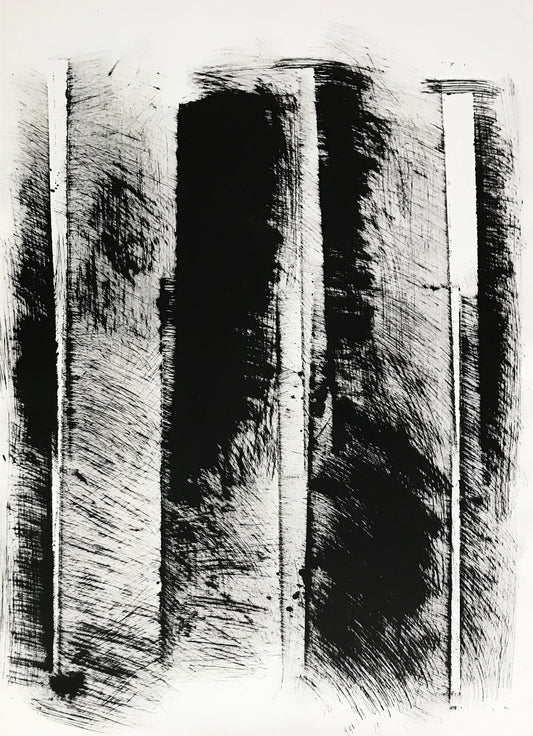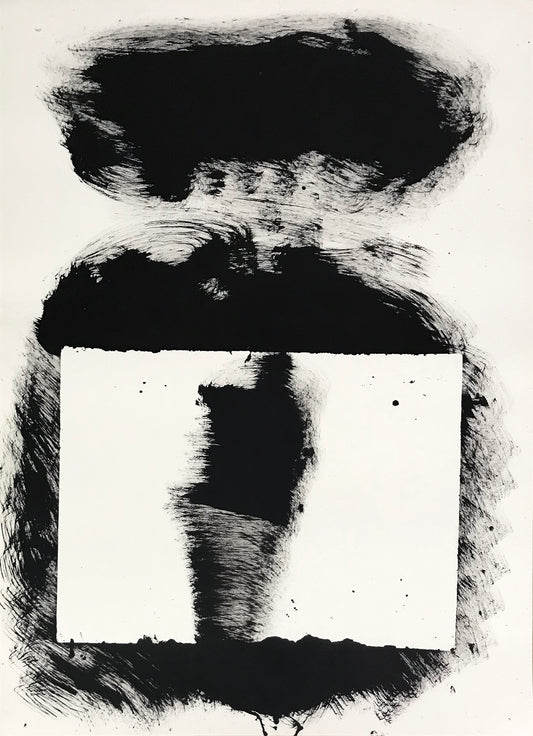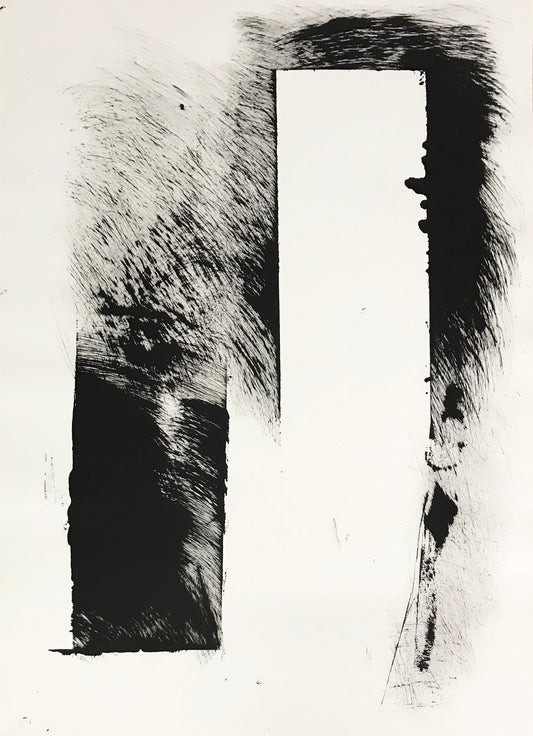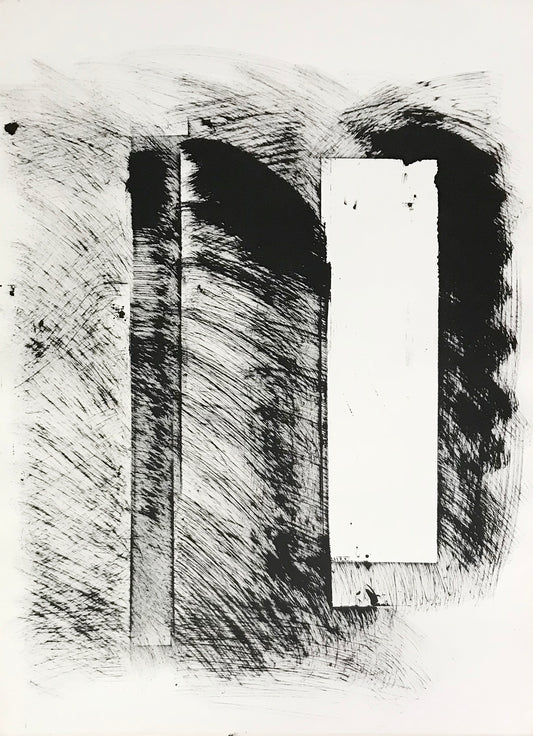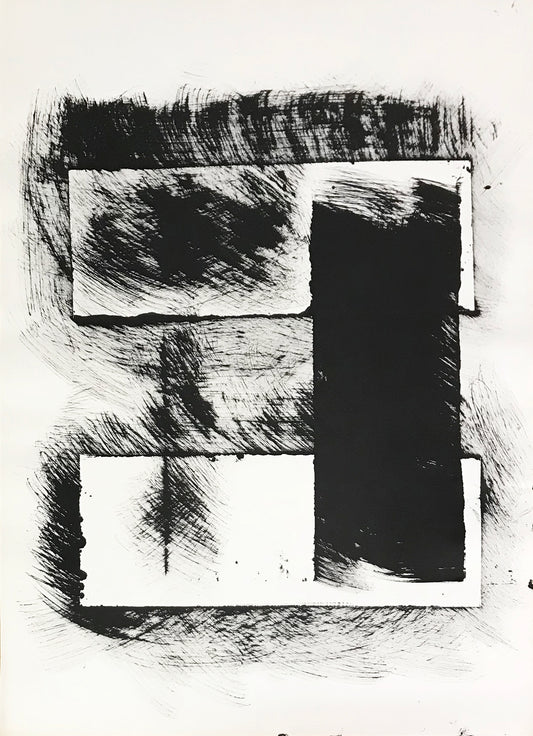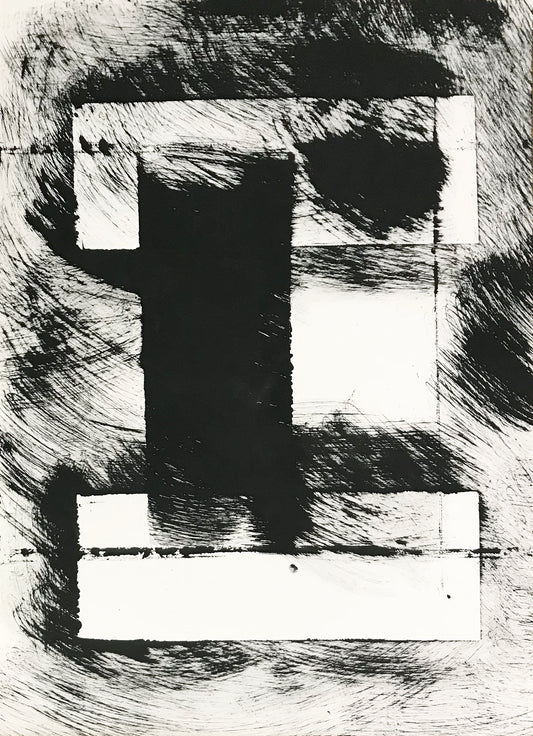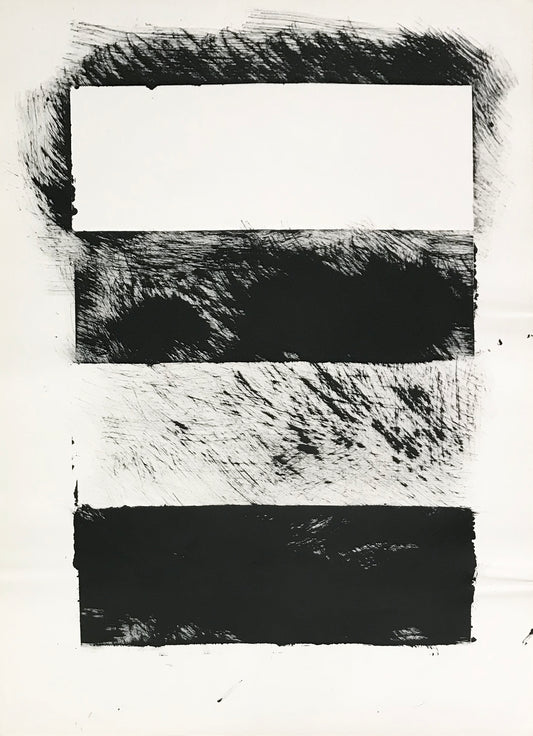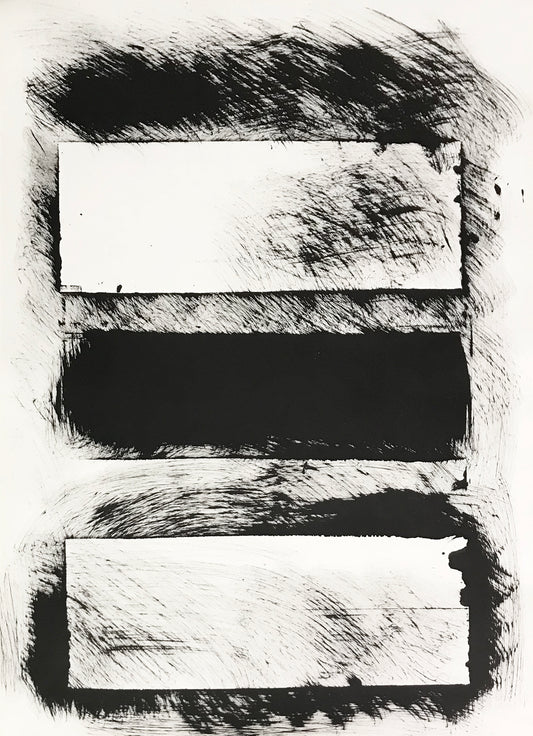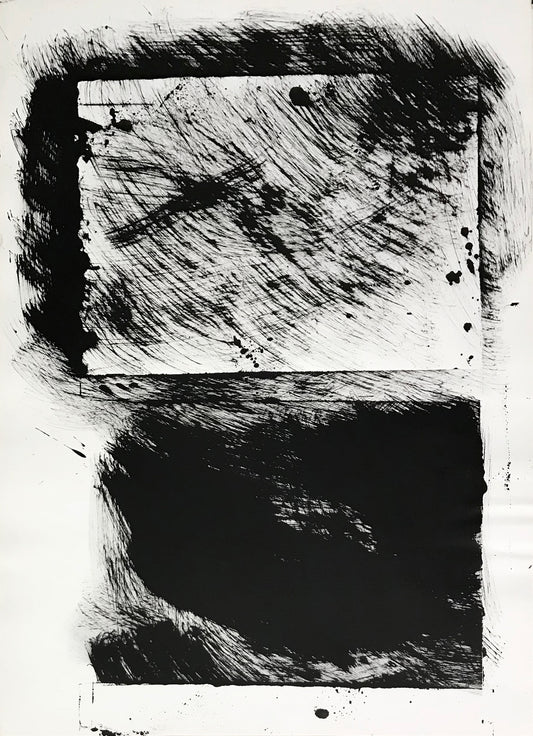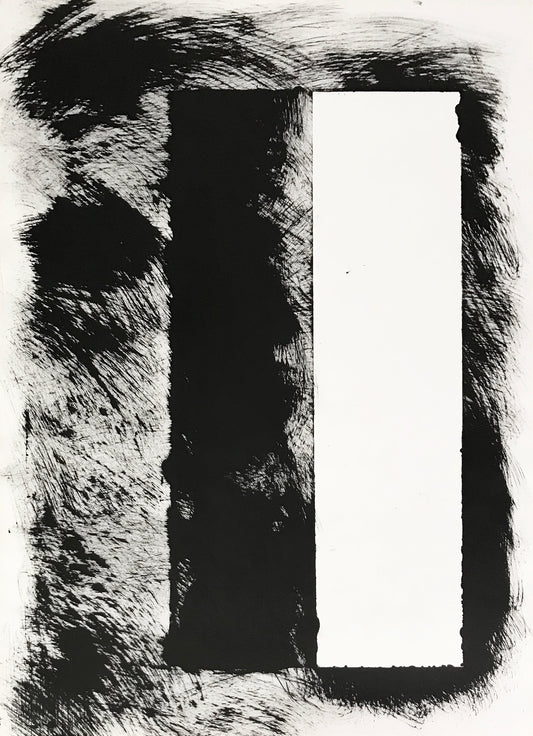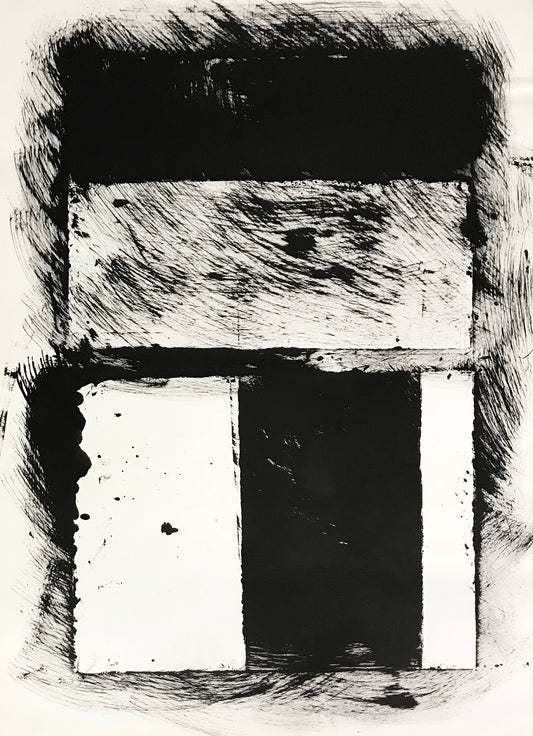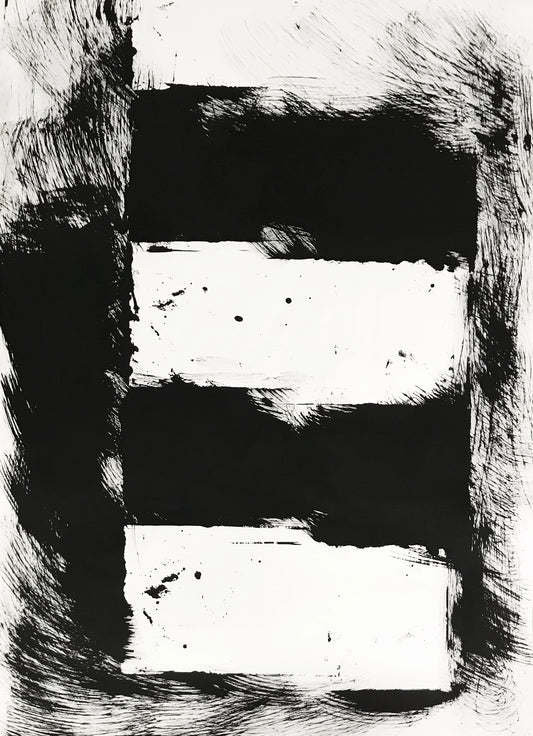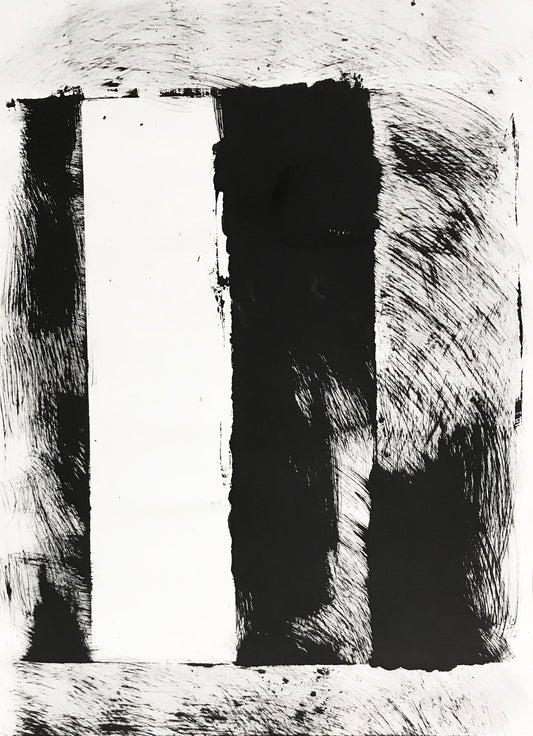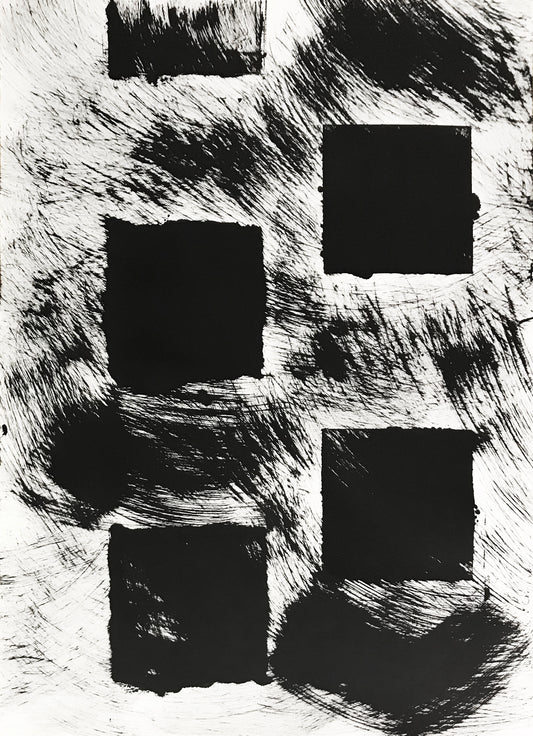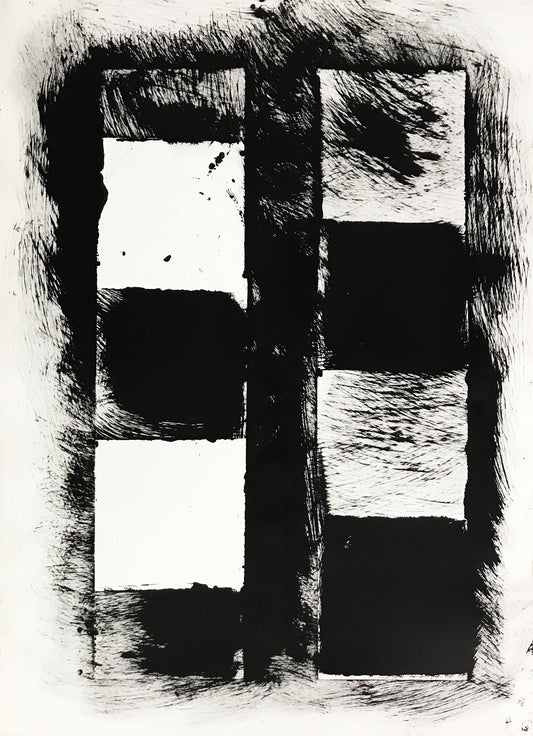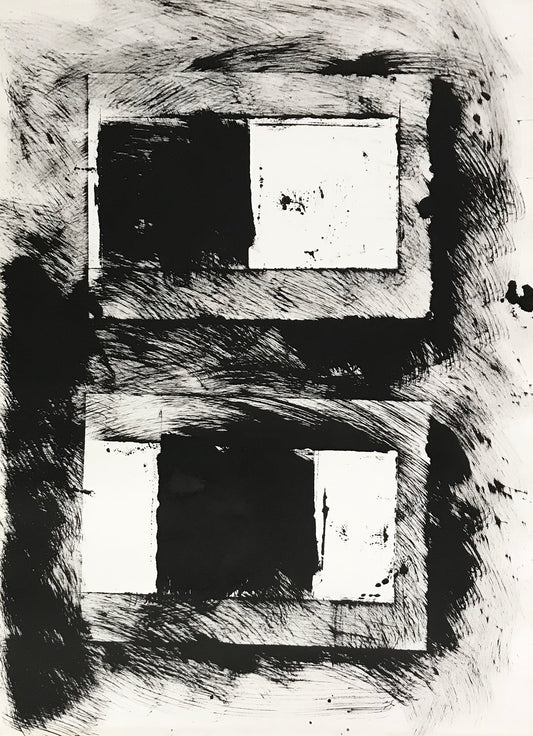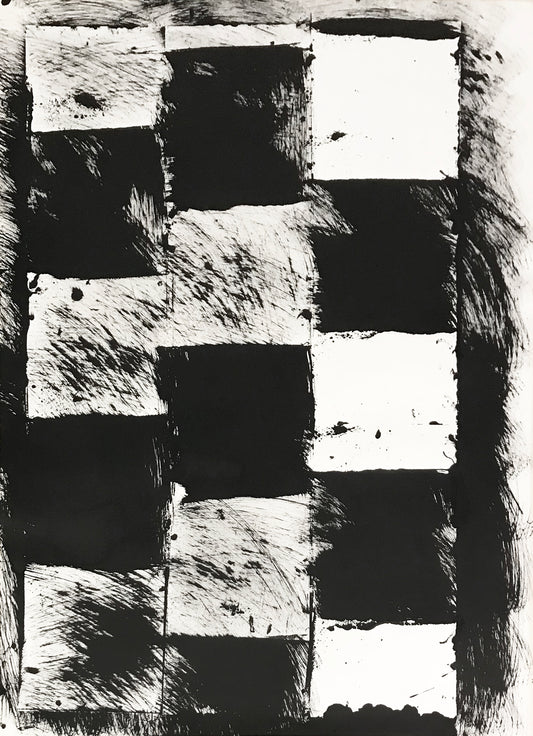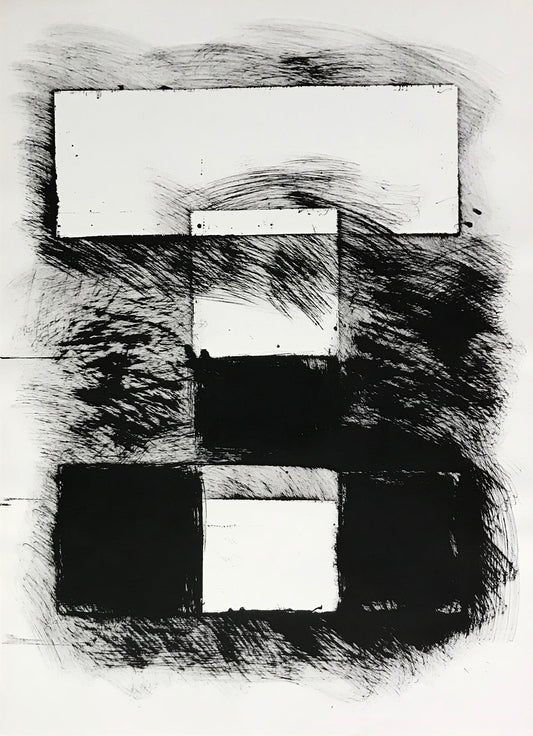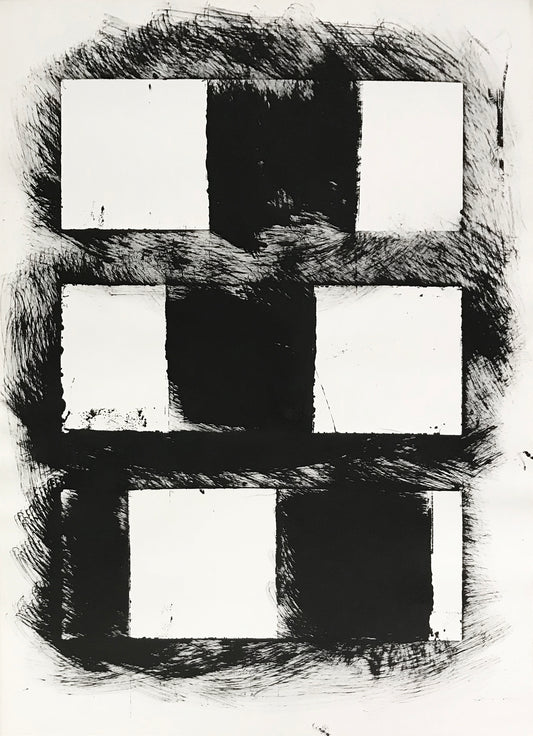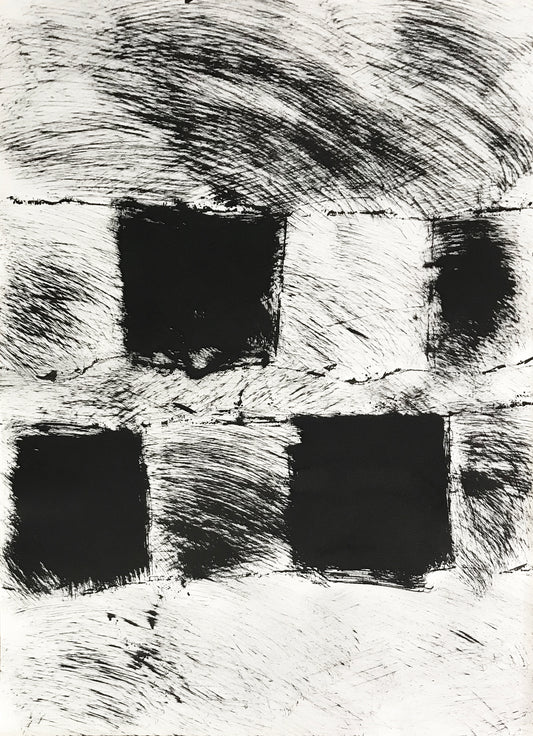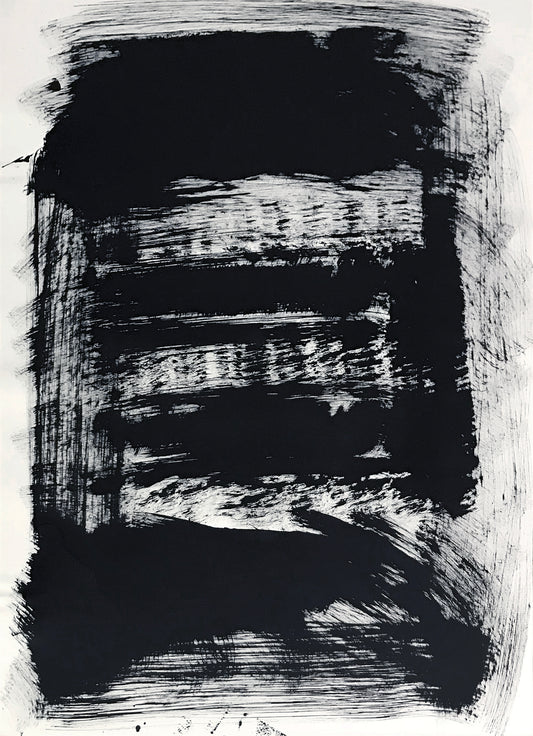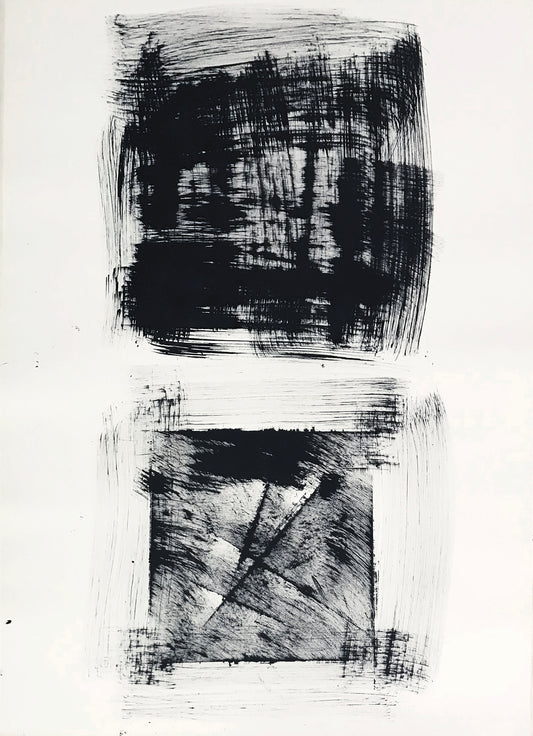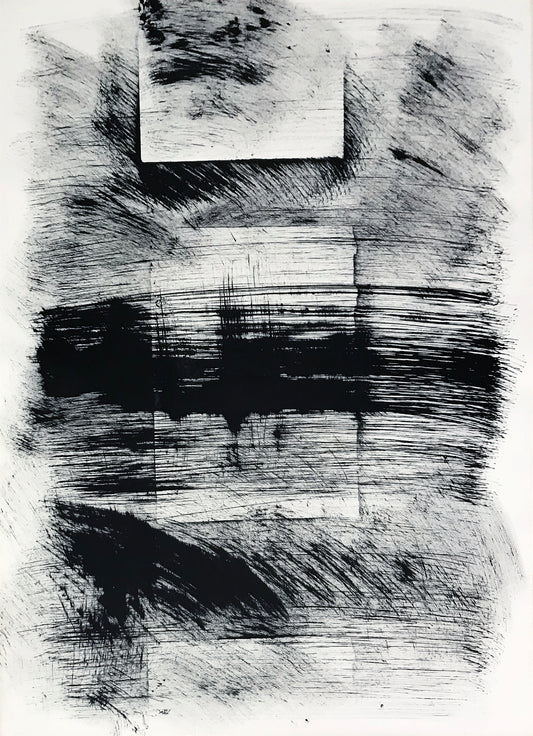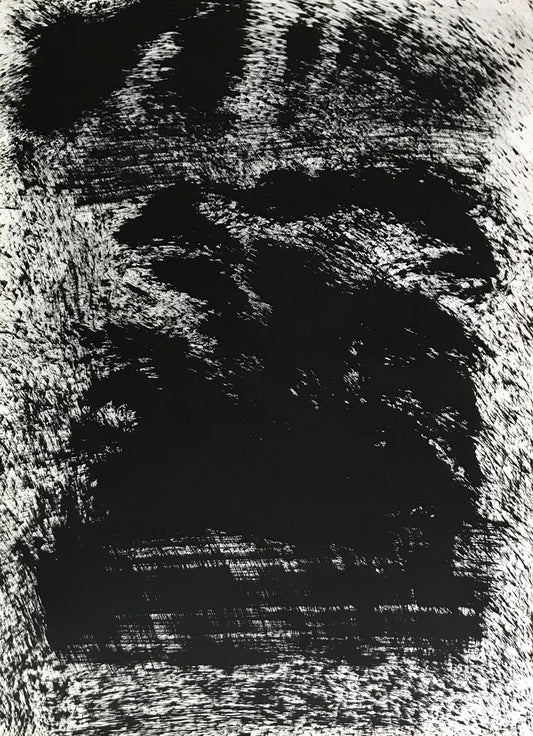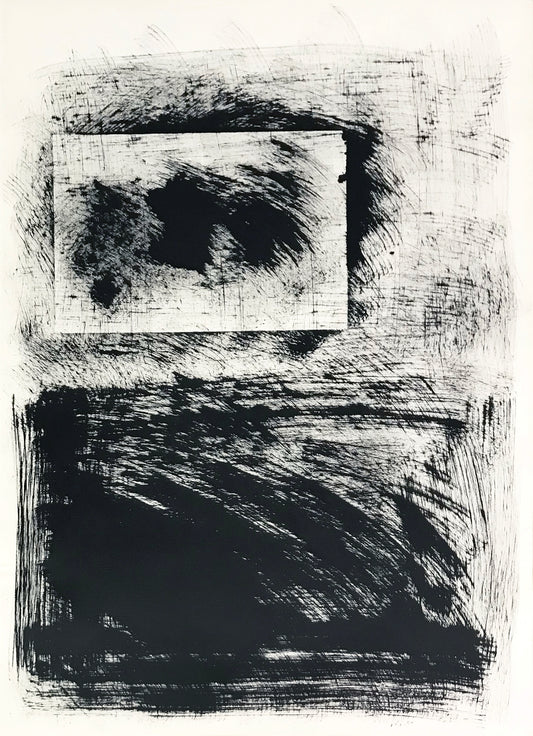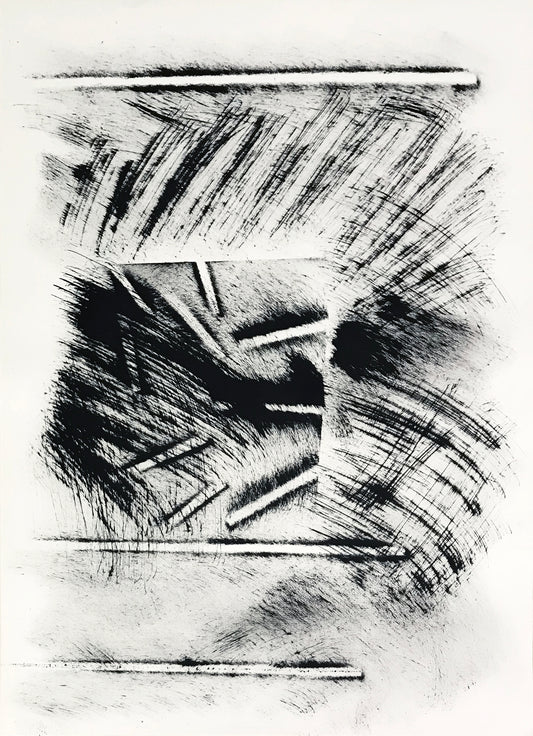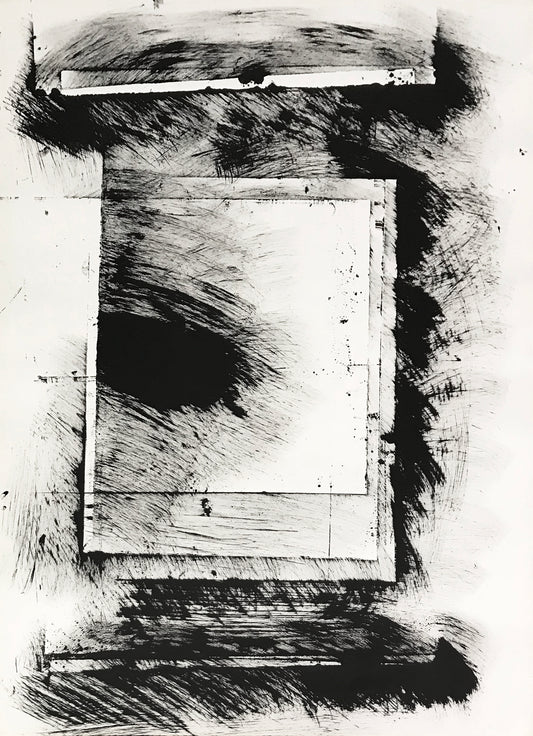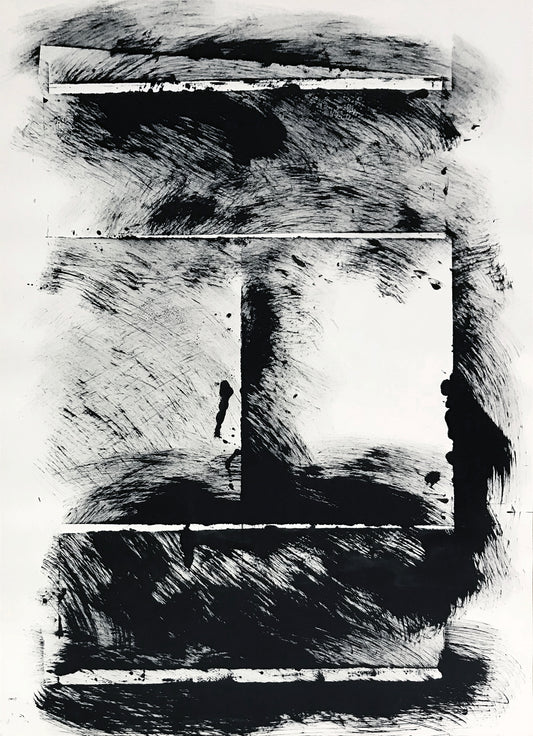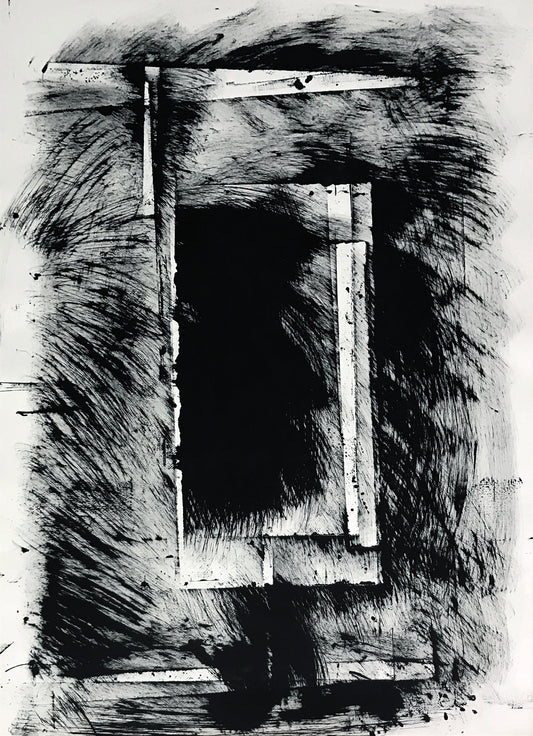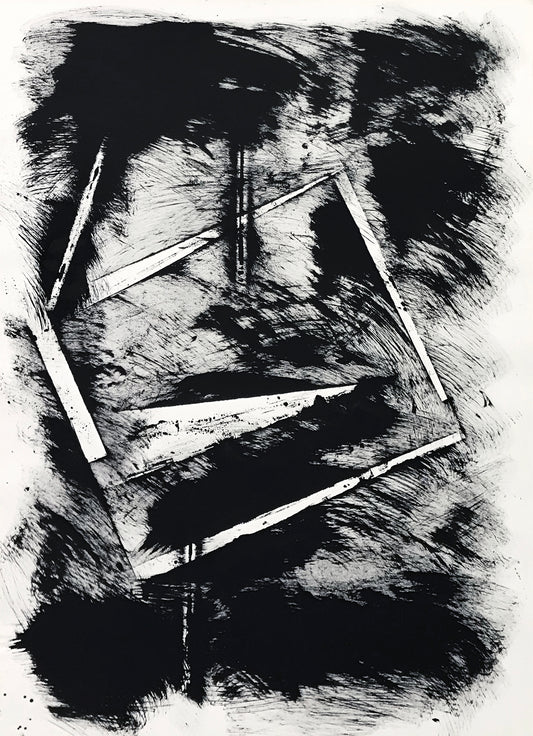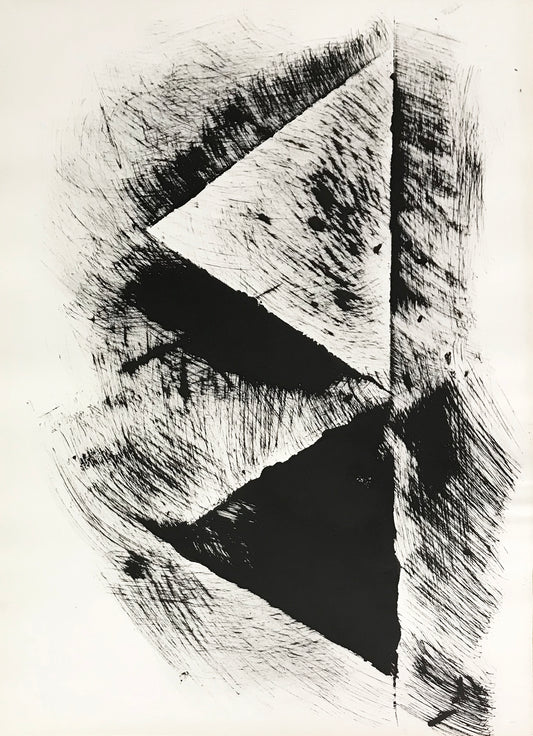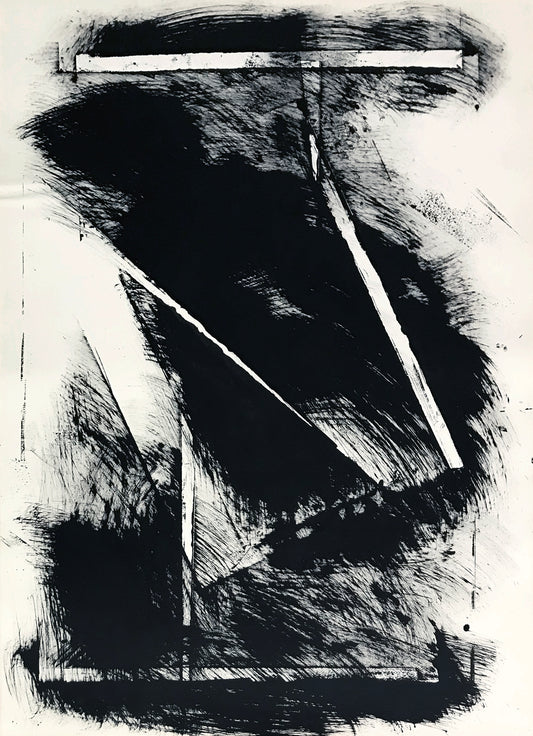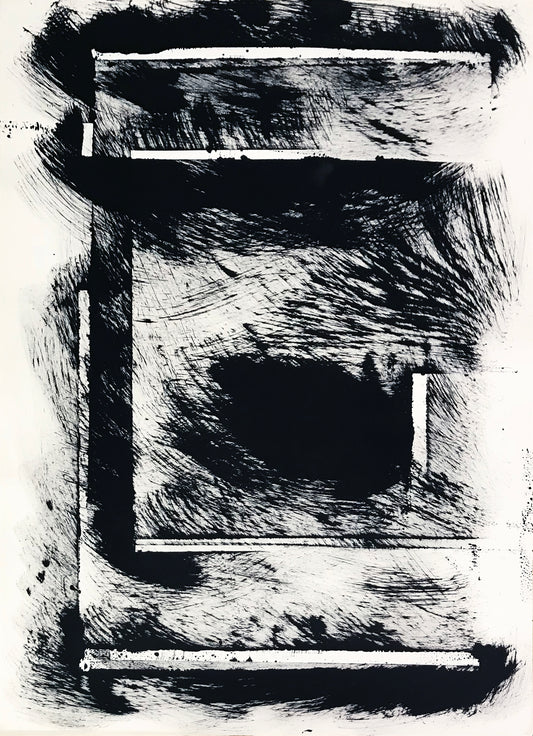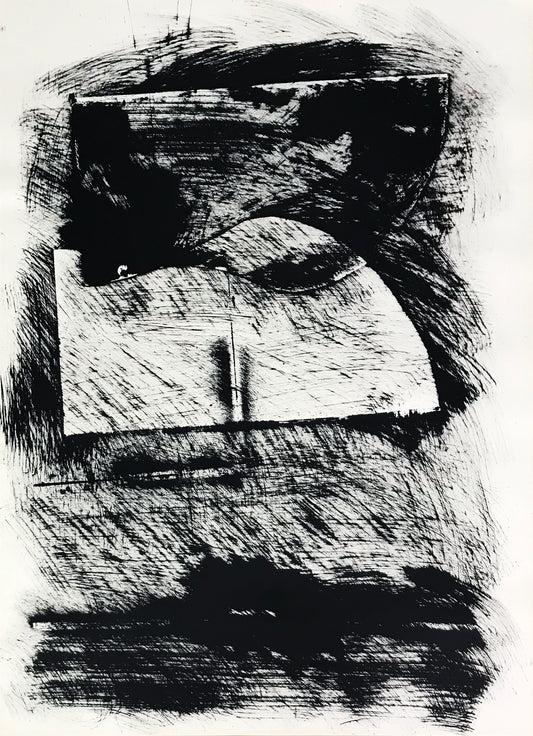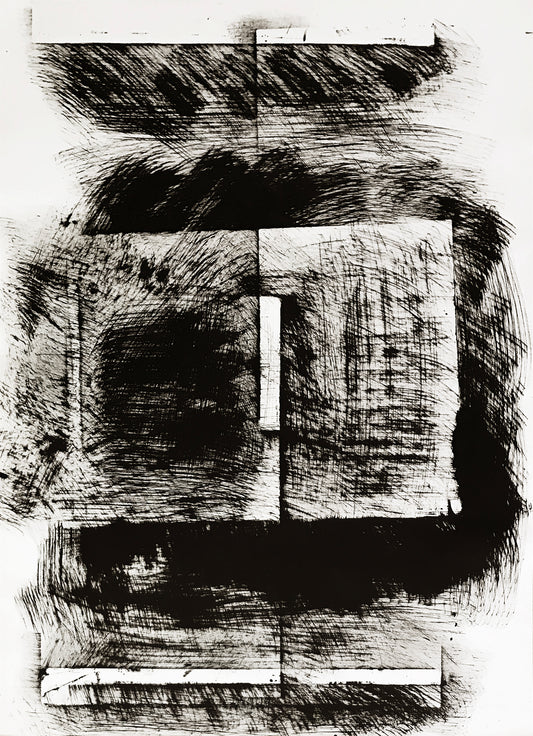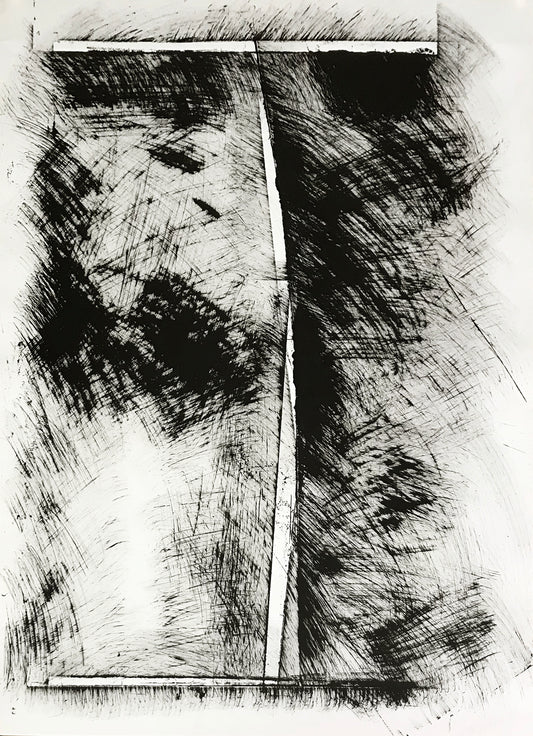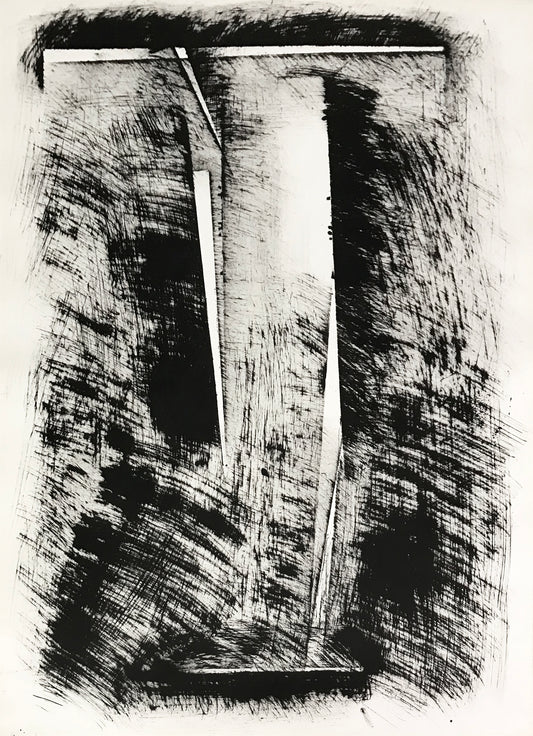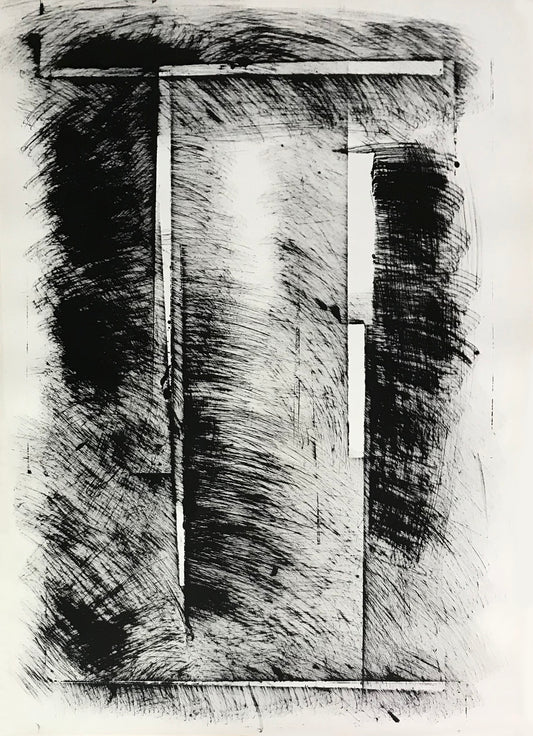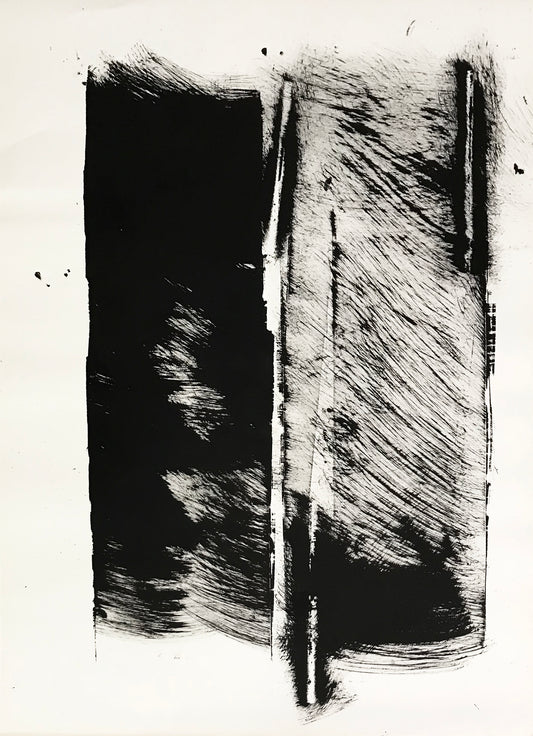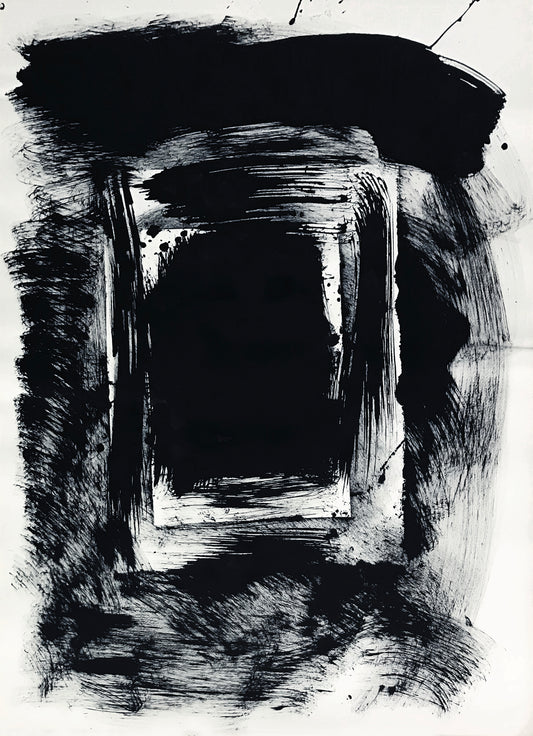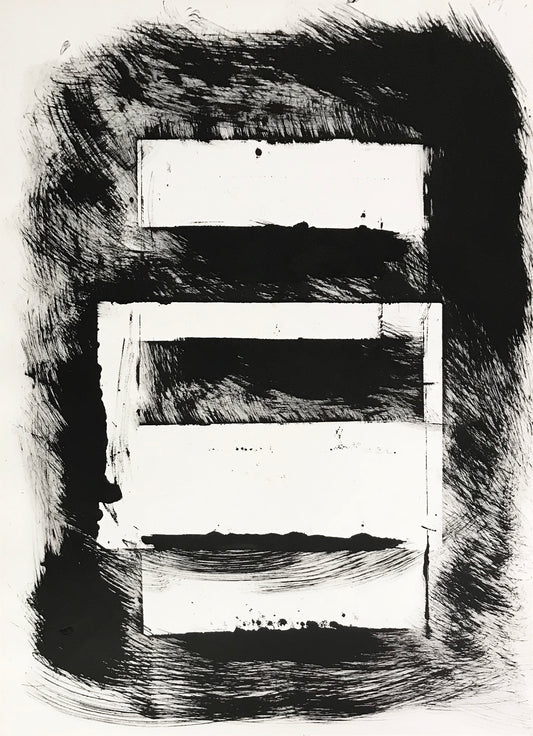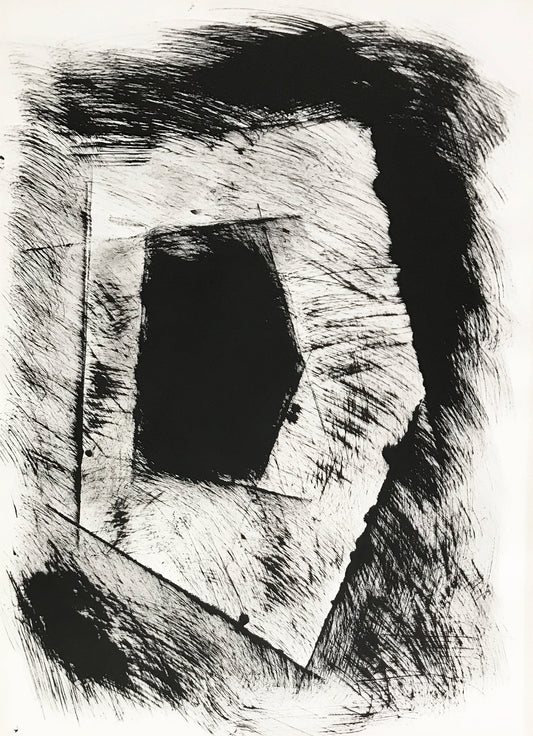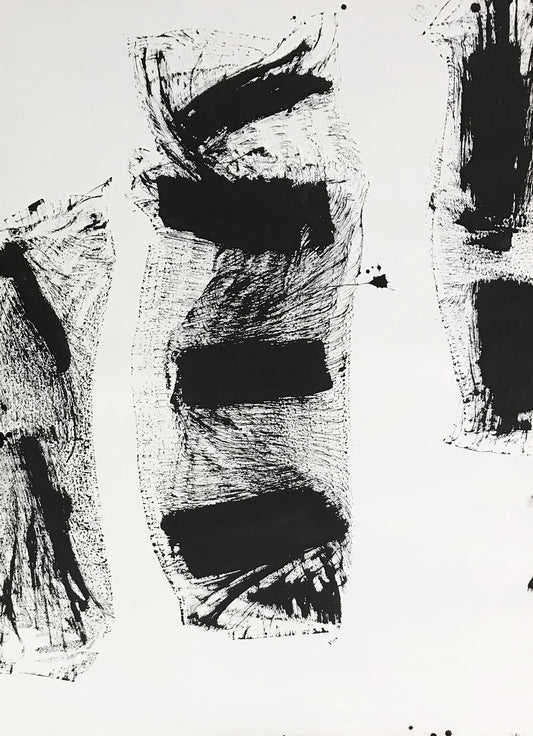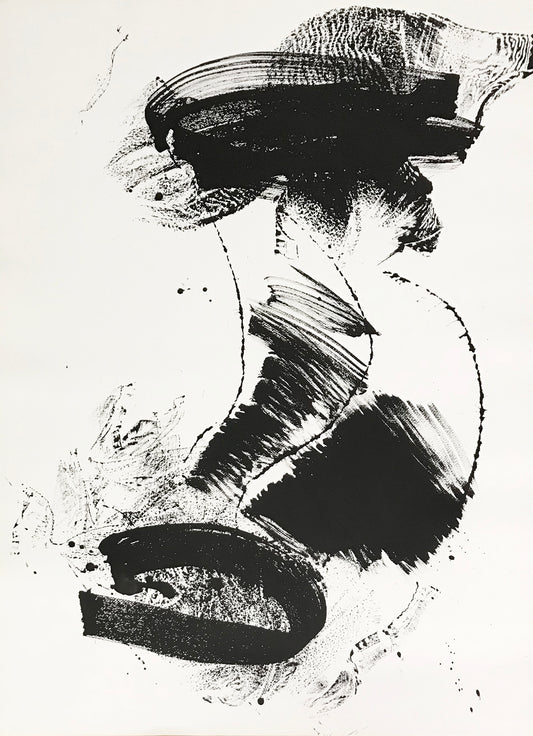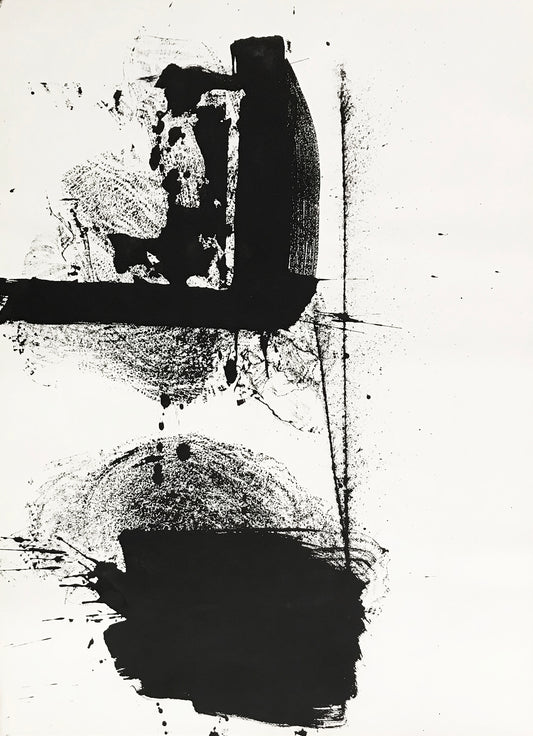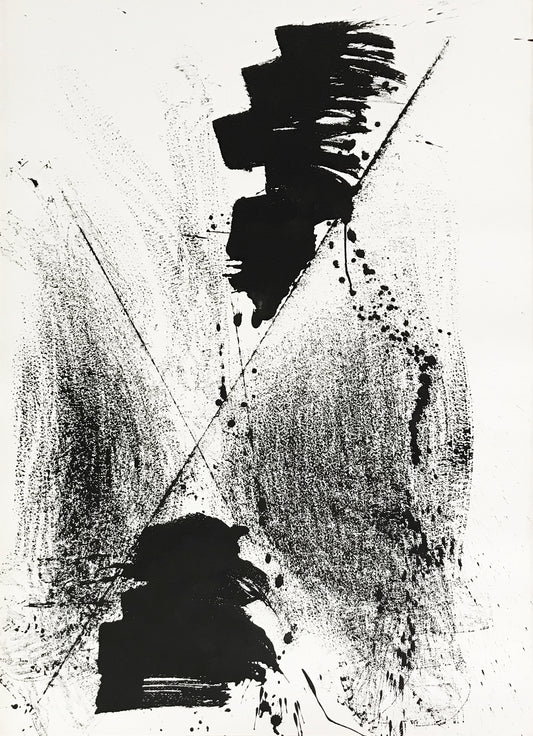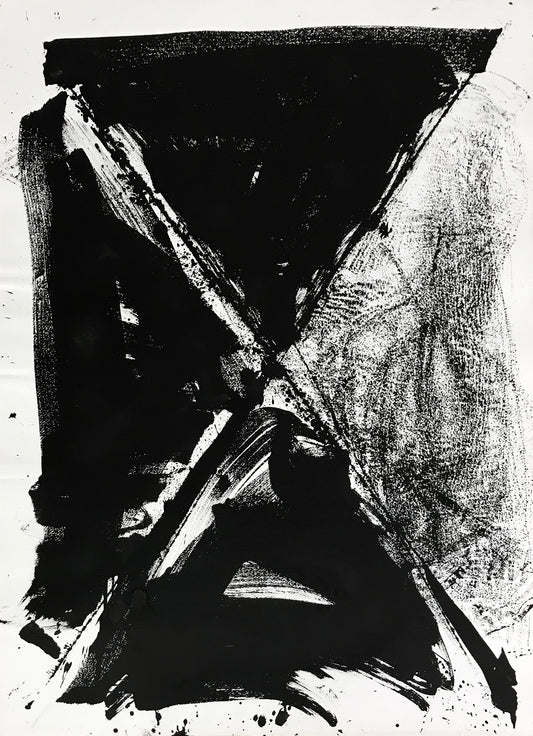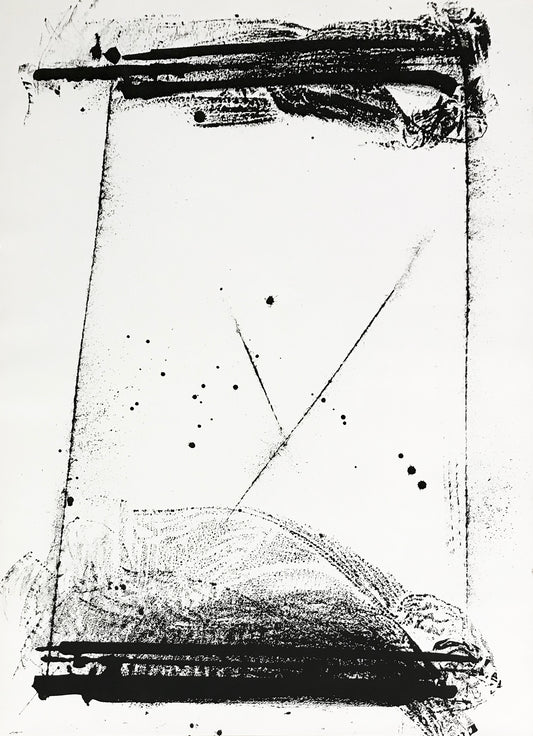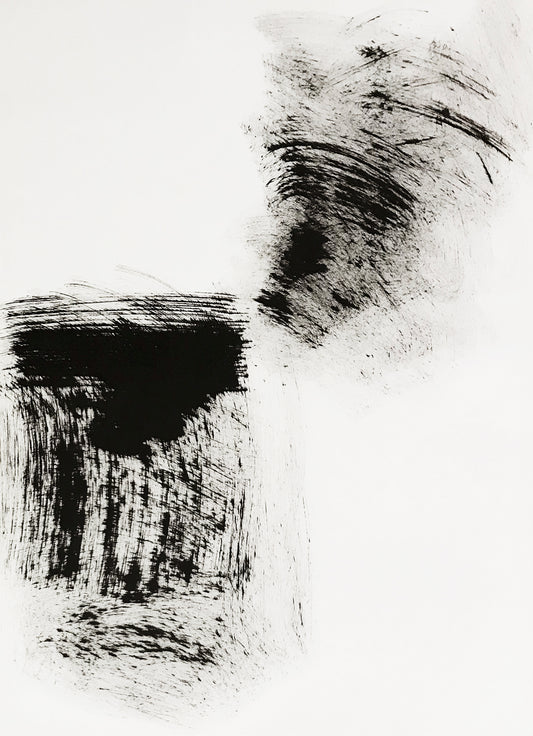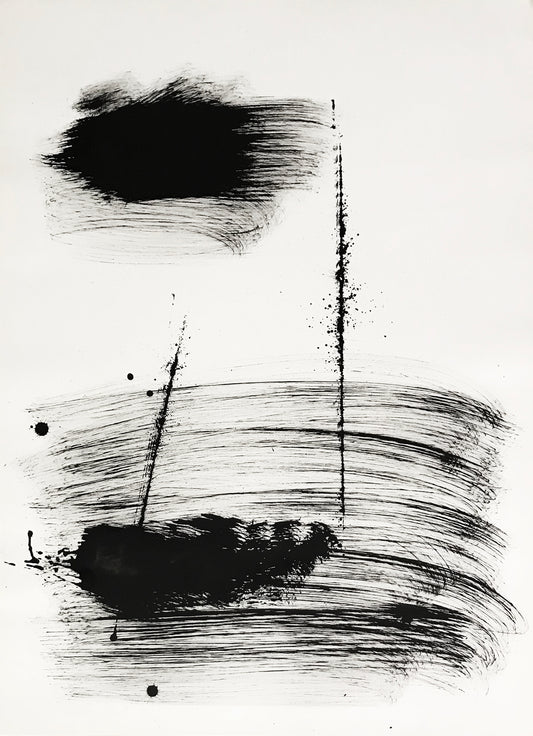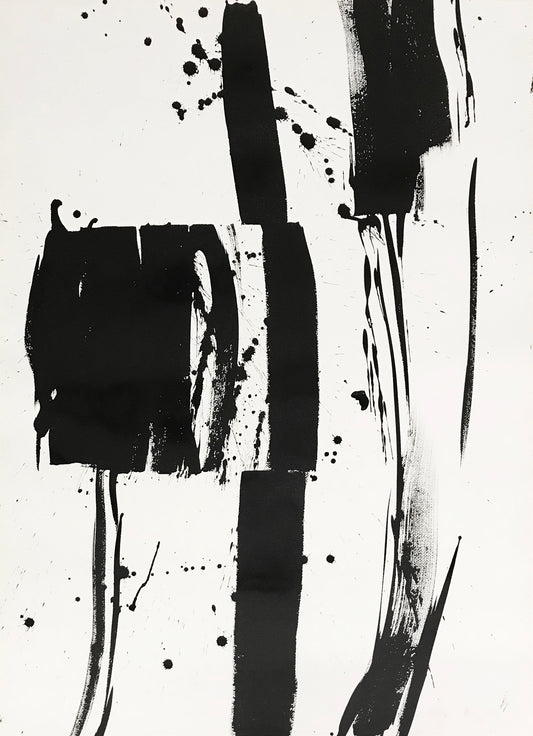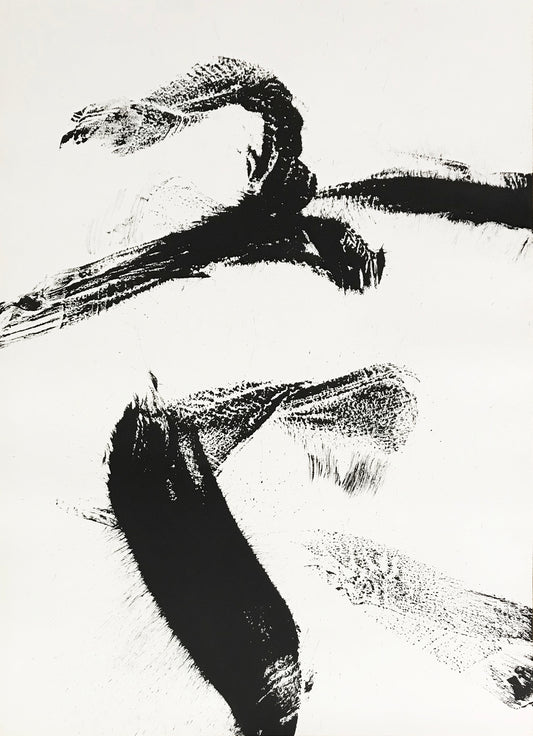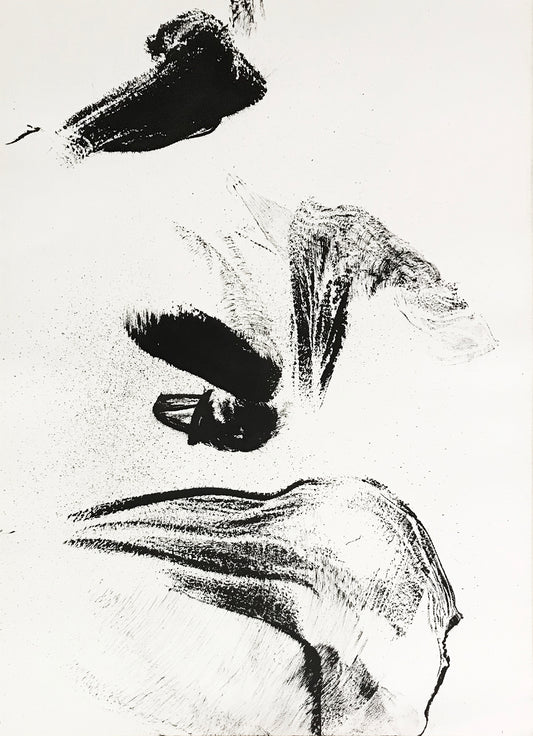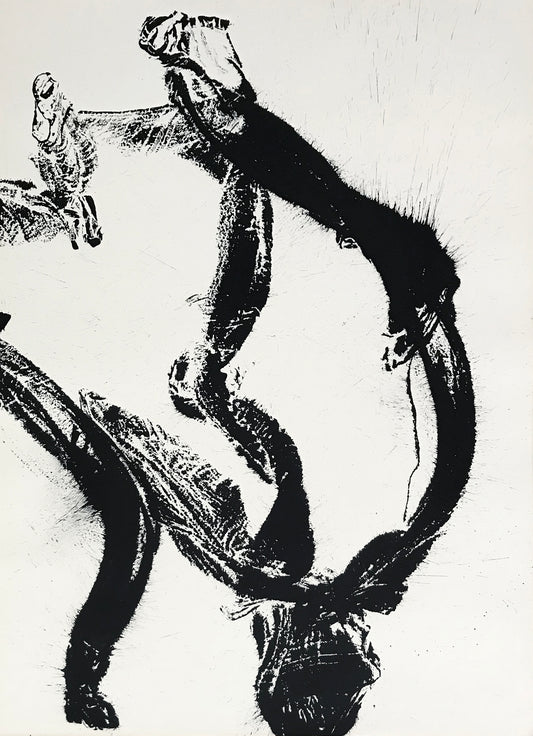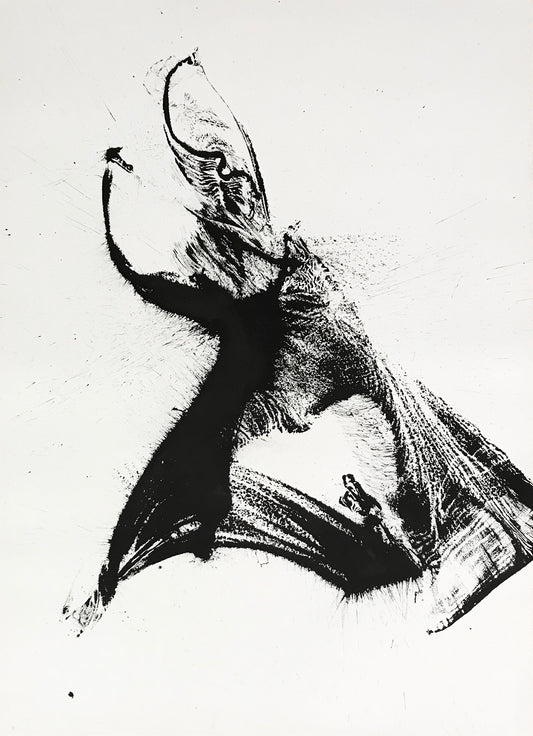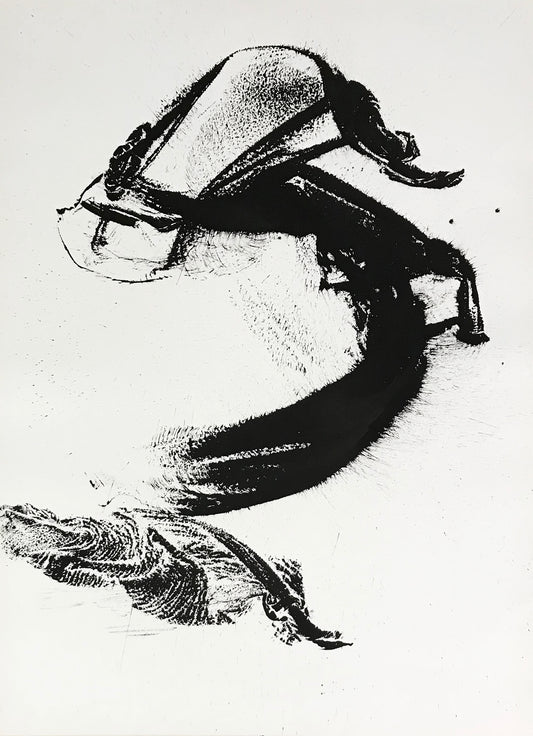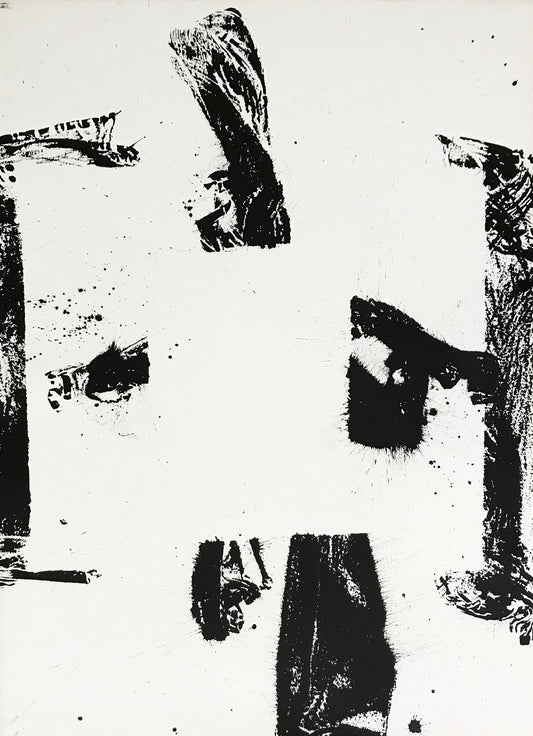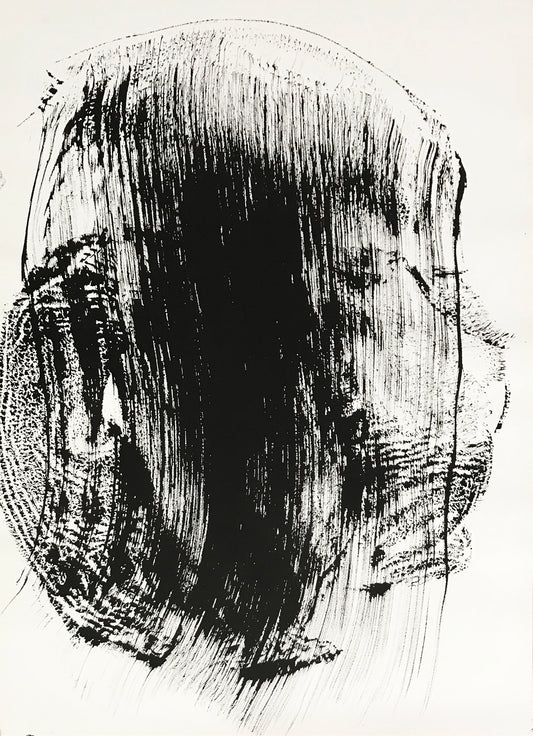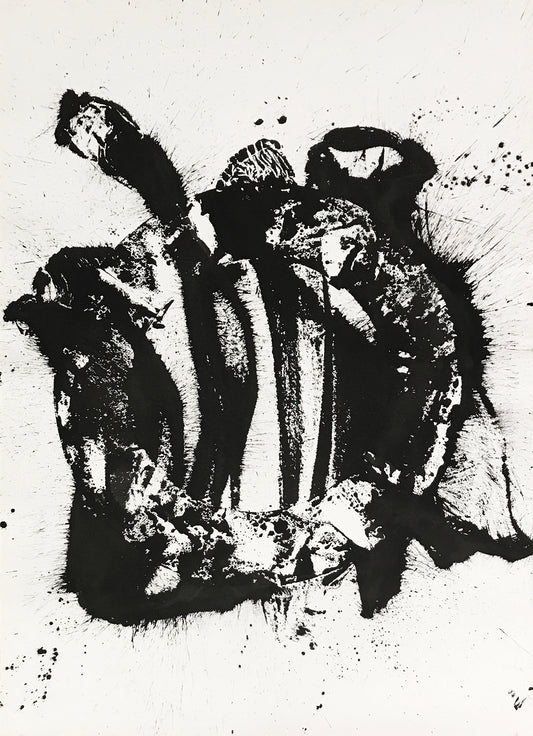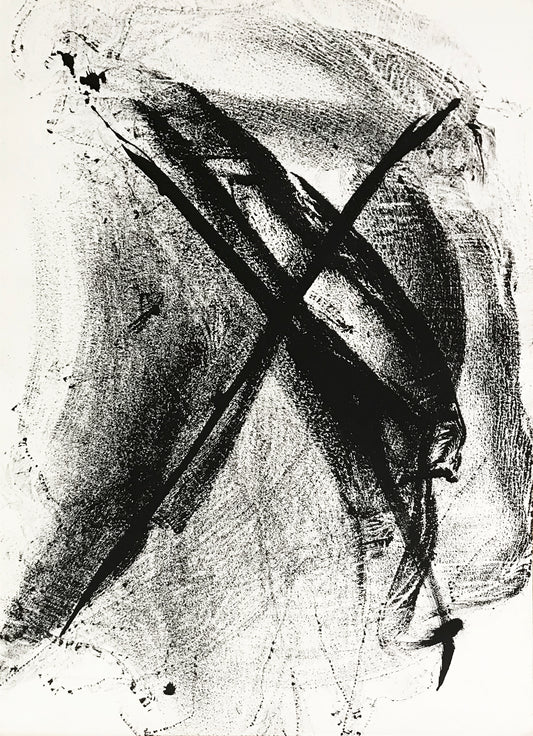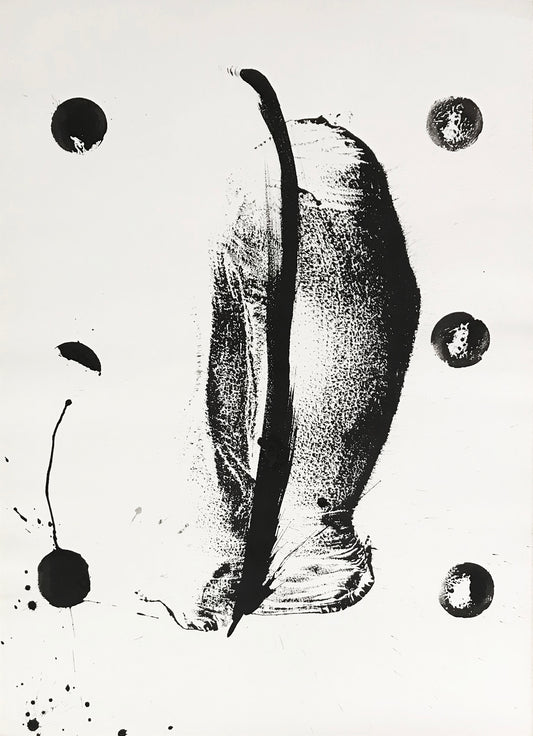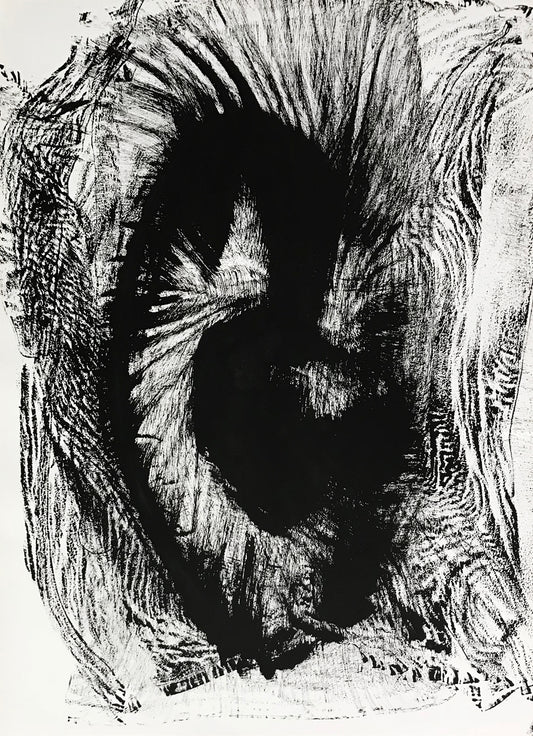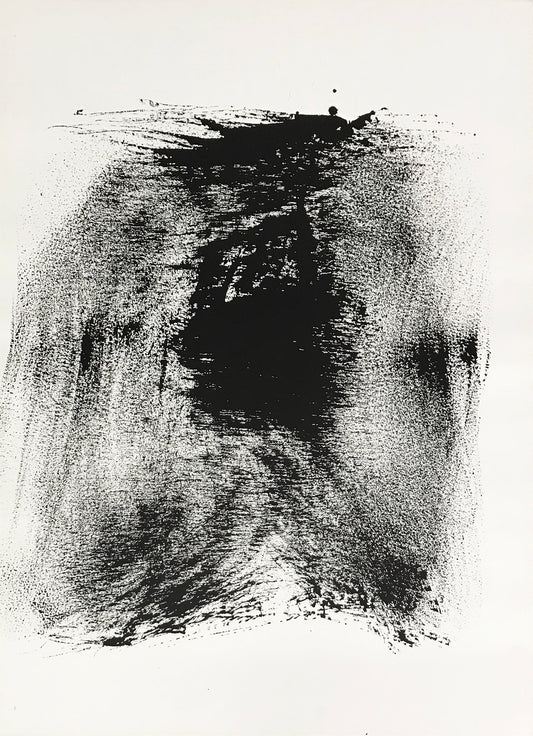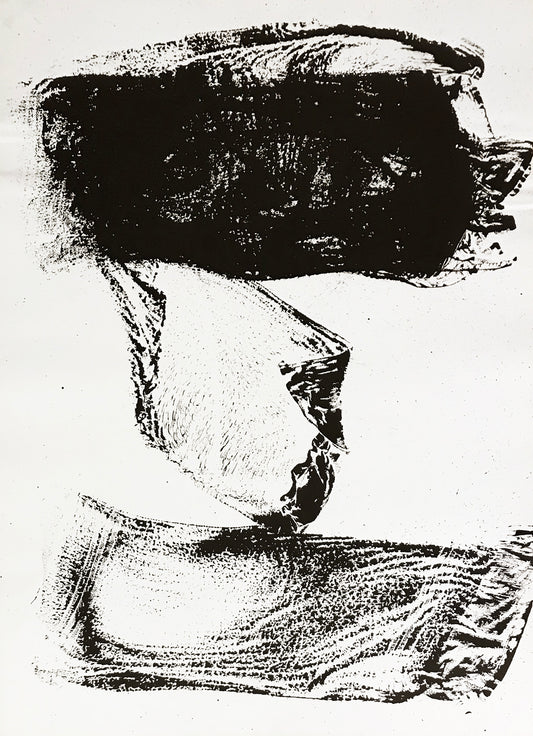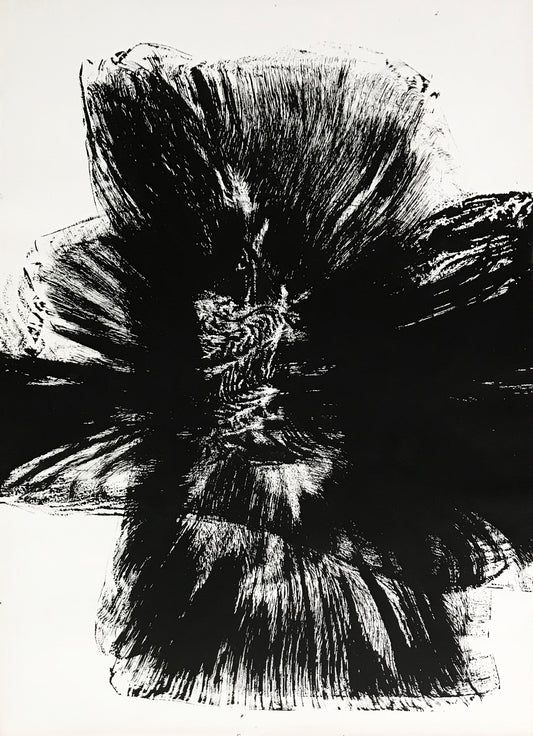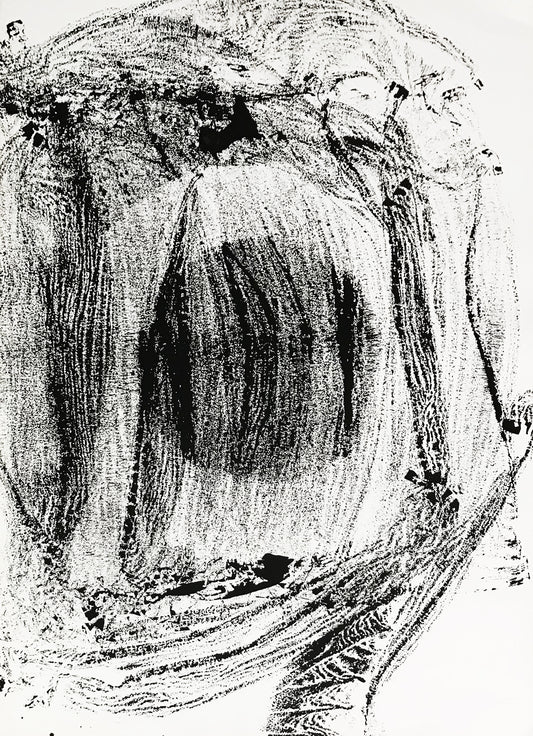Collection: Muso Window (1983-84)
Each person is different, but I have the desire to clearly state my feelings in black or white terms. At the same time, there are some situations which are ambiguous and cannot be expressed in such terms. When I was paying attention to the state of mind, I had in mind the “Muso Window.” This is a device used in Japanese wooden architecture in which the degree of wind that penetrates can be adjusted by arranging two latticework windows back to back, then fixing the outside and moving the inner latticework window to adjust the gap. The reason that the “Muso Window” came to mind was that I considered it a device that would enable us to abstract and talk about the state of our spirits at each particular time.
If we think of the closed areas as black, and the gaps from which the outside is visible as white, we can start with a clear depiction of black and white, then vaguely decrease the white until there is no white at all. This is the principle of the “Muso Window.” I saw ambiguous windows as well as black and white ones. These included the half-open windows for wind control and windows just before being closed. It was the ambiguous windows that strongly attracted me.
-
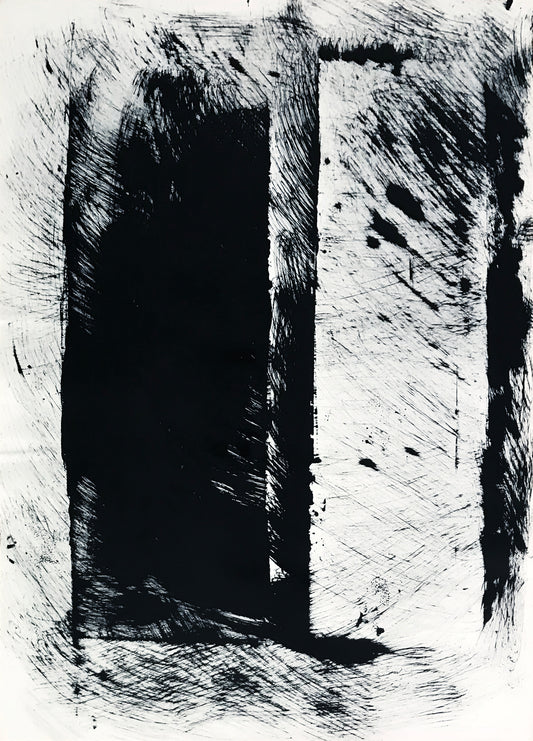 Sold out
Sold outMuso Window 001
Regular price ¥300,000Regular priceUnit price / per -
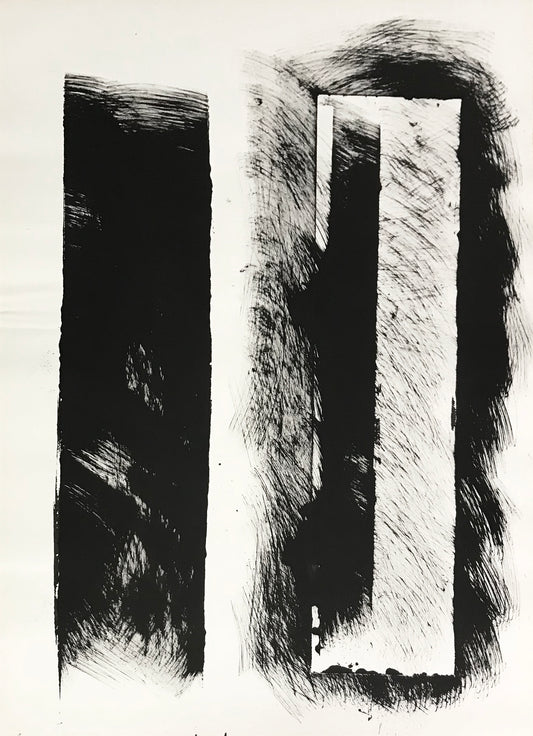 Sold out
Sold outMuso Window 002
Regular price ¥300,000Regular priceUnit price / per -
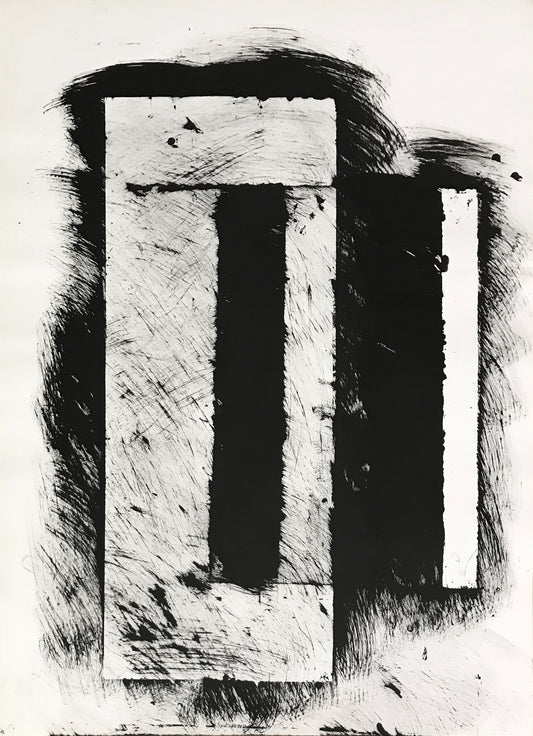 Sold out
Sold outMuso Window 003
Regular price ¥300,000Regular priceUnit price / per -
Muso Window 004
Regular price ¥300,000Regular priceUnit price / per -
Muso Window 005
Regular price ¥300,000Regular priceUnit price / per -
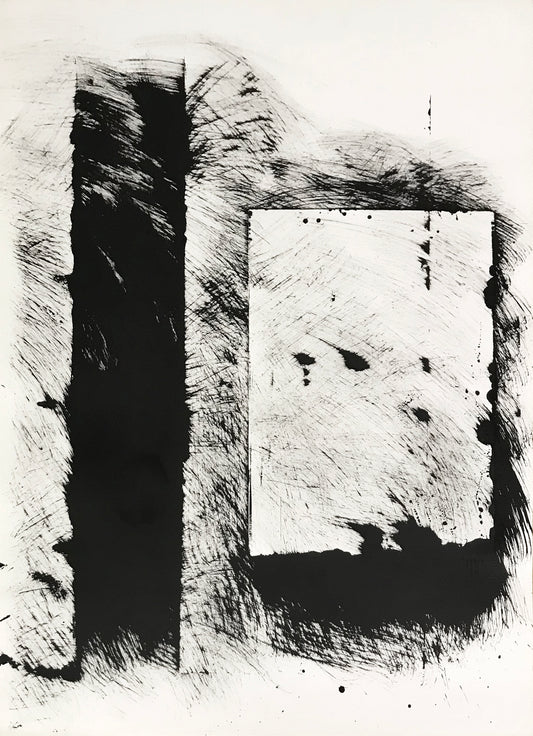 Sold out
Sold outMuso Window 006
Regular price ¥300,000Regular priceUnit price / per -
Muso Window 007
Regular price ¥300,000Regular priceUnit price / per -
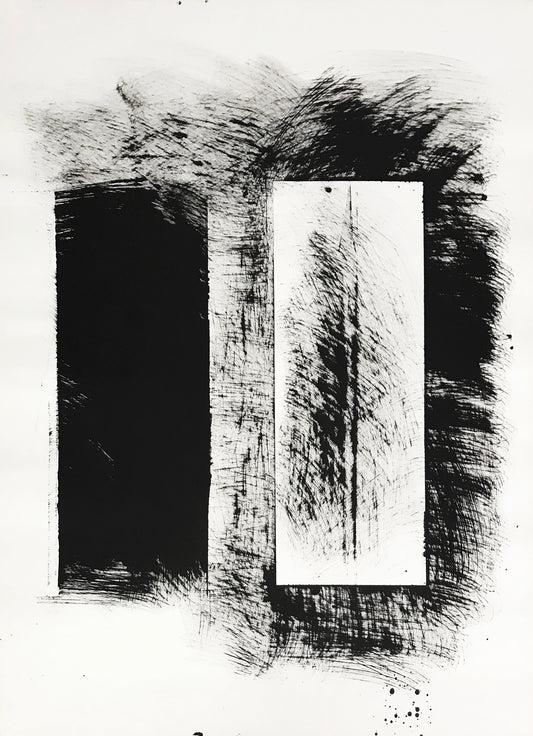 Sold out
Sold outMuso Window 008
Regular price ¥300,000Regular priceUnit price / per -
Muso Window 009
Regular price ¥300,000Regular priceUnit price / per -
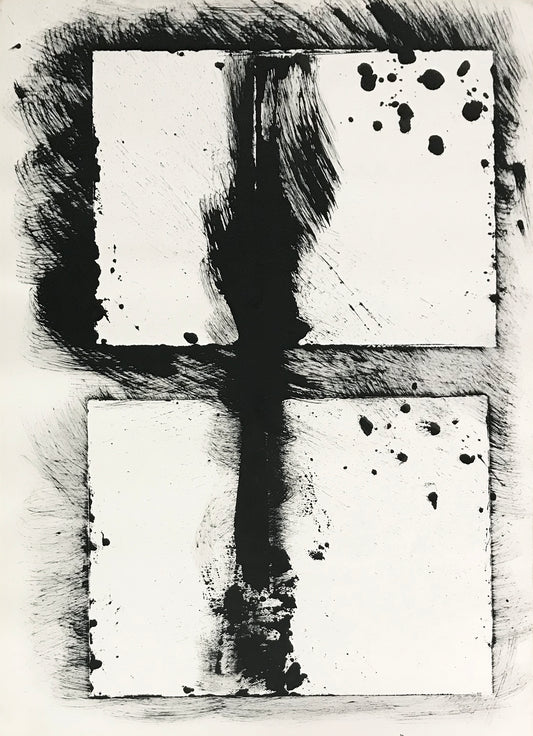 Sold out
Sold outMuso Window 010
Regular price ¥300,000Regular priceUnit price / per -
Muso Window 011
Regular price ¥300,000Regular priceUnit price / per -
Muso Window 012
Regular price ¥300,000Regular priceUnit price / per -
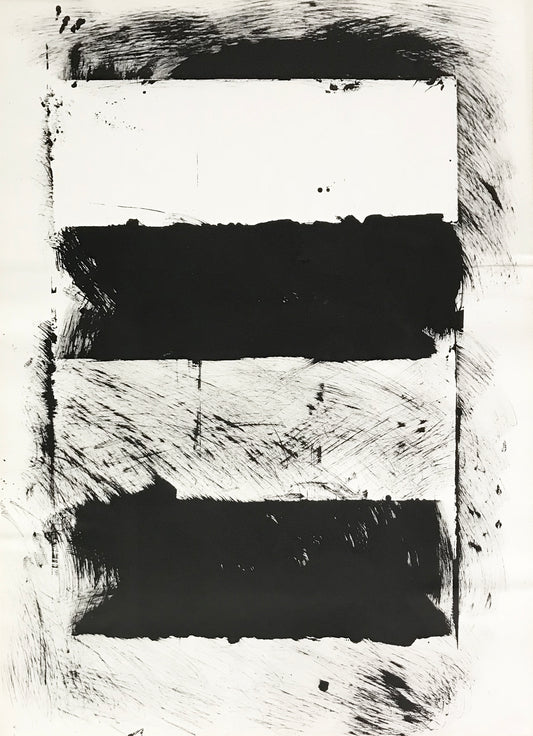 Sold out
Sold outMuso Window 013
Regular price ¥300,000Regular priceUnit price / per -
Muso Window 014
Regular price ¥300,000Regular priceUnit price / per -
Muso Window 015
Regular price ¥300,000Regular priceUnit price / per -
Muso Window 016
Regular price ¥300,000Regular priceUnit price / per -
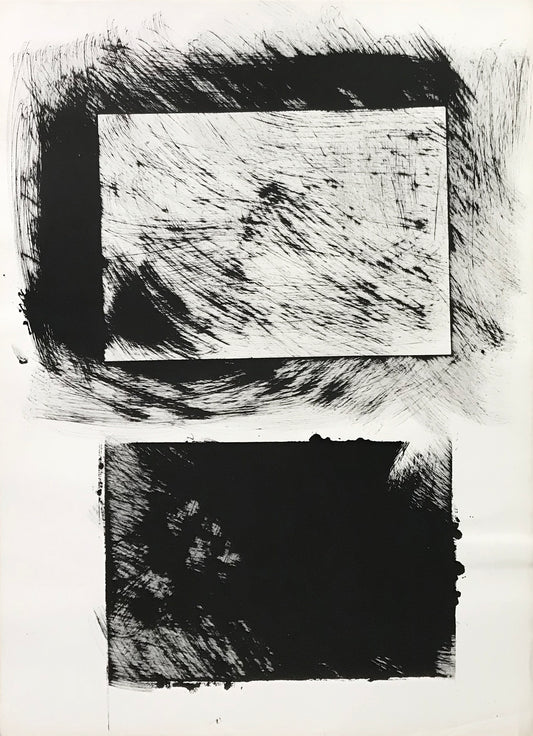 Sold out
Sold outMuso Window 017
Regular price ¥300,000Regular priceUnit price / per -
Muso Window 018
Regular price ¥300,000Regular priceUnit price / per -
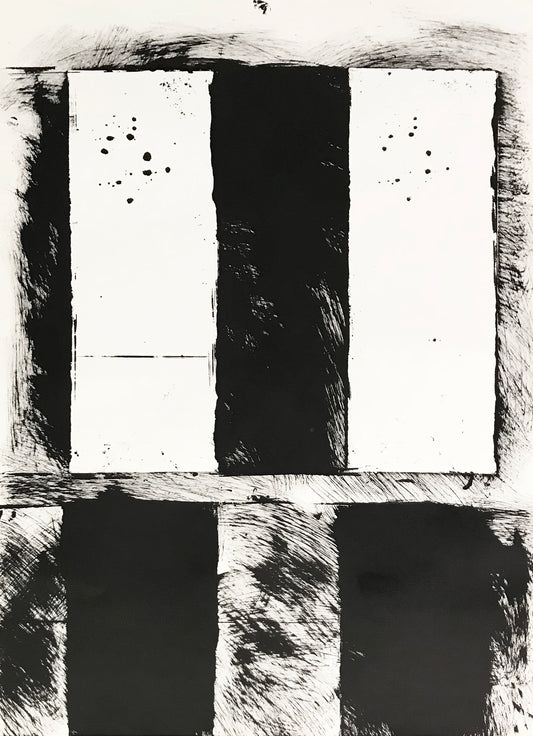 Sold out
Sold outMuso Window 019
Regular price ¥300,000Regular priceUnit price / per -
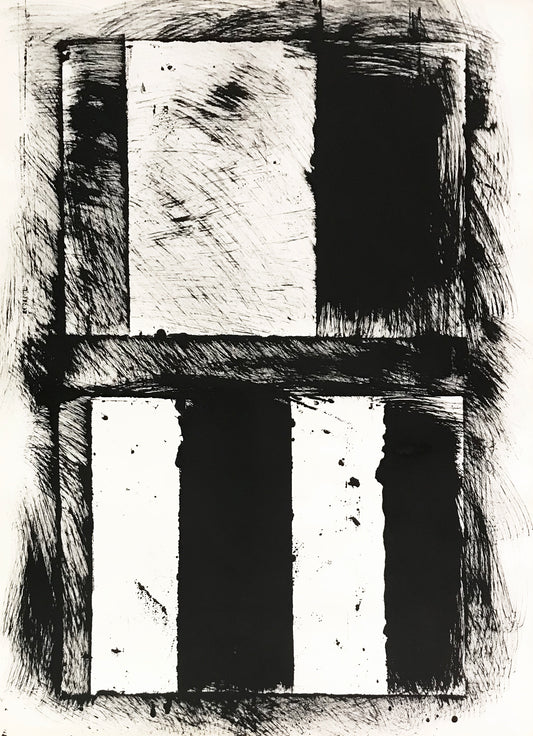 Sold out
Sold outMuso Window 020
Regular price ¥300,000Regular priceUnit price / per -
Muso Window 021
Regular price ¥300,000Regular priceUnit price / per -
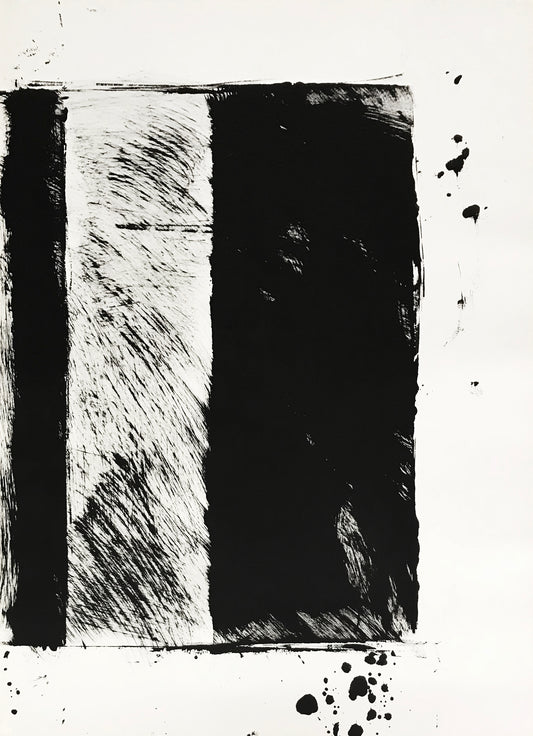 Sold out
Sold outMuso Window 022
Regular price ¥300,000Regular priceUnit price / per -
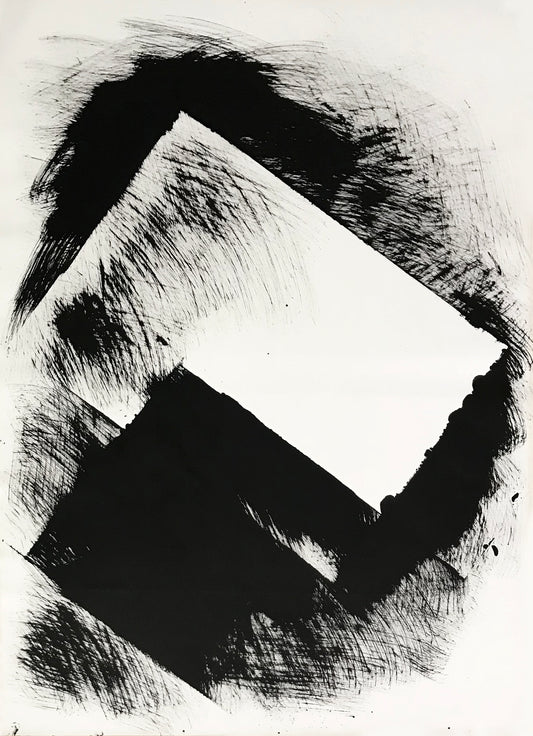 Sold out
Sold outMuso Window 023
Regular price ¥300,000Regular priceUnit price / per -
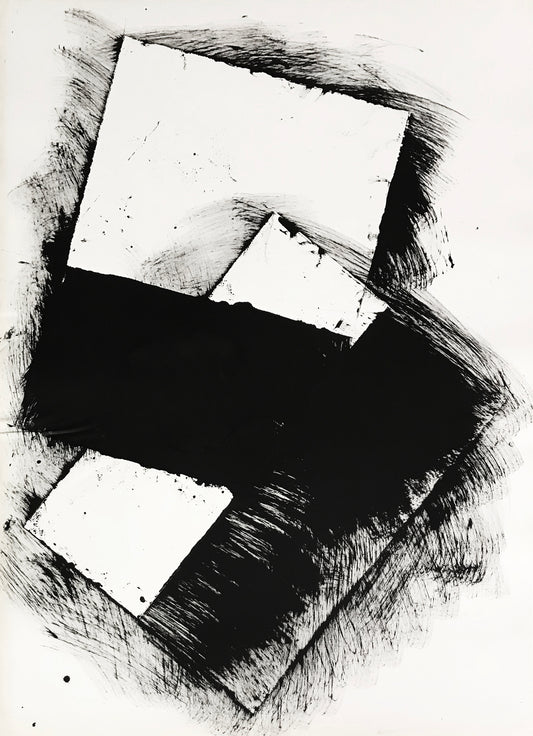 Sold out
Sold outMuso Window 024
Regular price ¥300,000Regular priceUnit price / per -
Muso Window 025
Regular price ¥300,000Regular priceUnit price / per -
Muso Window 026
Regular price ¥300,000Regular priceUnit price / per -
Muso Window 027
Regular price ¥300,000Regular priceUnit price / per -
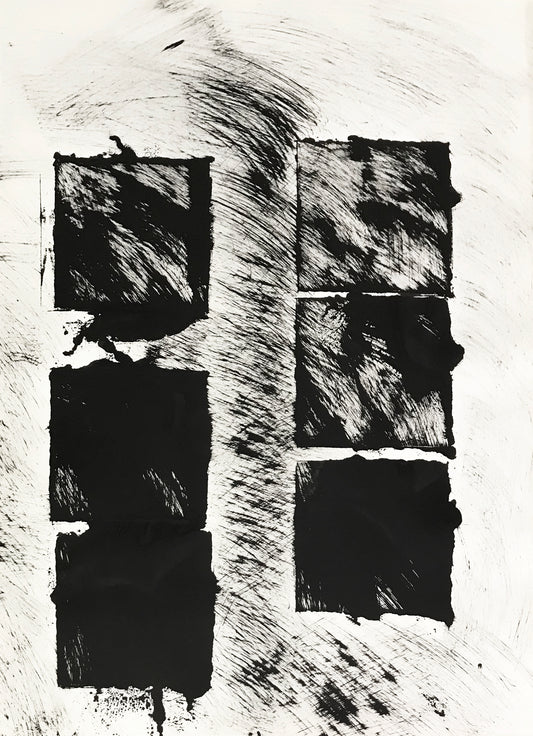 Sold out
Sold outMuso Window 028
Regular price ¥300,000Regular priceUnit price / per -
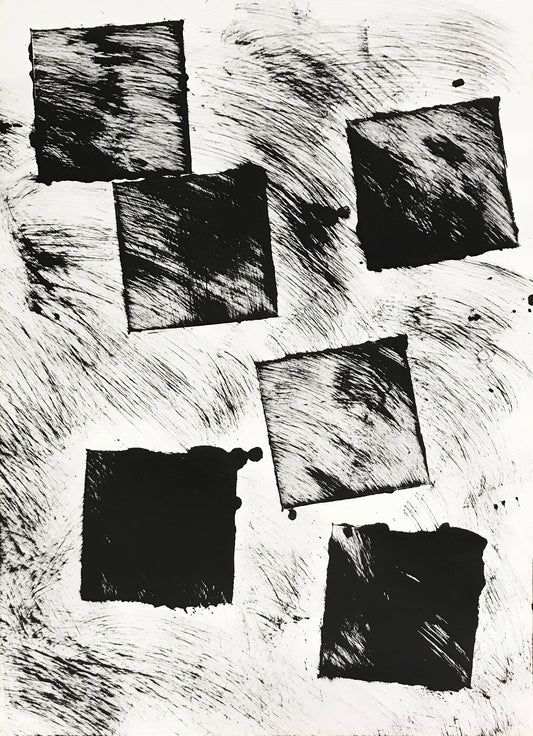 Sold out
Sold outMuso Window 029
Regular price ¥300,000Regular priceUnit price / per -
Muso Window 030
Regular price ¥300,000Regular priceUnit price / per -
Muso Window 031
Regular price ¥300,000Regular priceUnit price / per -
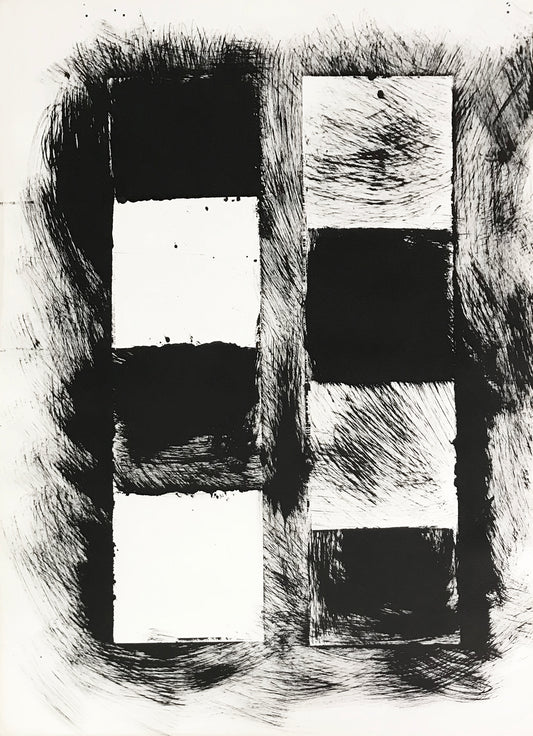 Sold out
Sold outMuso Window 032
Regular price ¥300,000Regular priceUnit price / per -
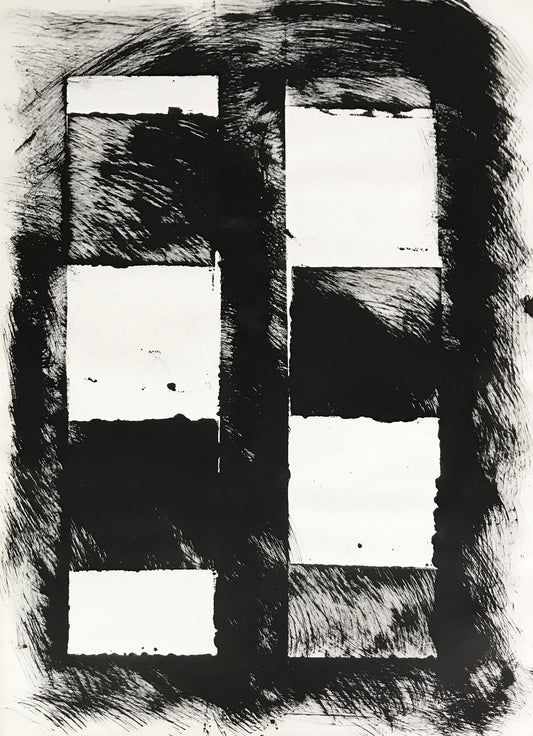 Sold out
Sold outMuso Window 033
Regular price ¥300,000Regular priceUnit price / per -
 Sold out
Sold outMuso Window 034
Regular price ¥300,000Regular priceUnit price / per -
Muso Window 035
Regular price ¥300,000Regular priceUnit price / per -
Muso Window 036
Regular price ¥300,000Regular priceUnit price / per -
Muso Window 037
Regular price ¥300,000Regular priceUnit price / per -
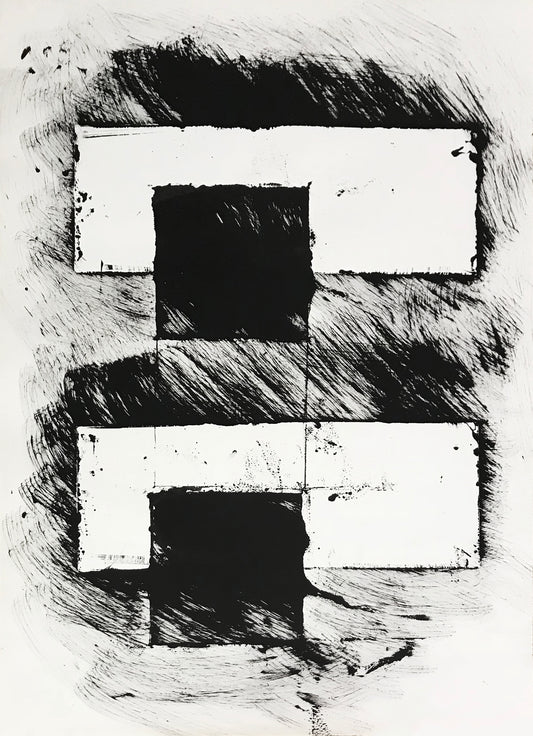 Sold out
Sold outMuso Window 038
Regular price ¥300,000Regular priceUnit price / per -
Muso Window 039
Regular price ¥300,000Regular priceUnit price / per -
Muso Window 040
Regular price ¥300,000Regular priceUnit price / per -
Muso Window 041
Regular price ¥300,000Regular priceUnit price / per -
Muso Window 042
Regular price ¥300,000Regular priceUnit price / per -
 Sold out
Sold outMuso Window 043
Regular price ¥300,000Regular priceUnit price / per -
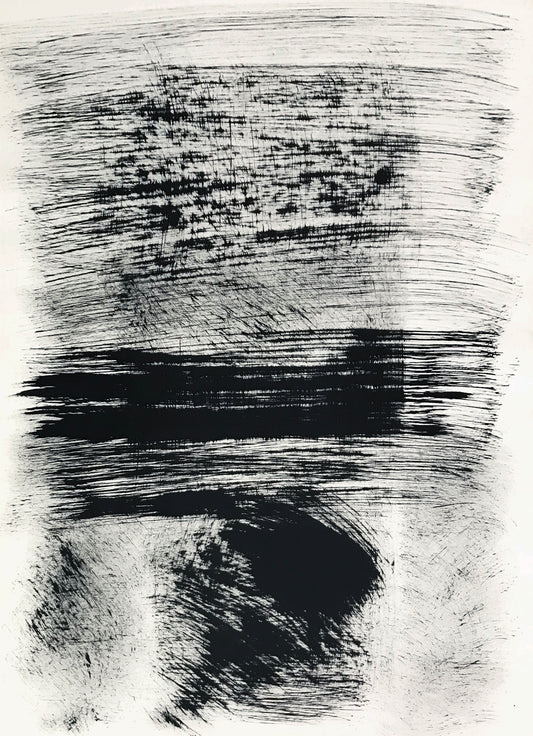 Sold out
Sold outMuso Window 044
Regular price ¥300,000Regular priceUnit price / per -
Muso Window 045
Regular price ¥300,000Regular priceUnit price / per -
Muso Window 046
Regular price ¥300,000Regular priceUnit price / per -
Muso Window 047
Regular price ¥300,000Regular priceUnit price / per -
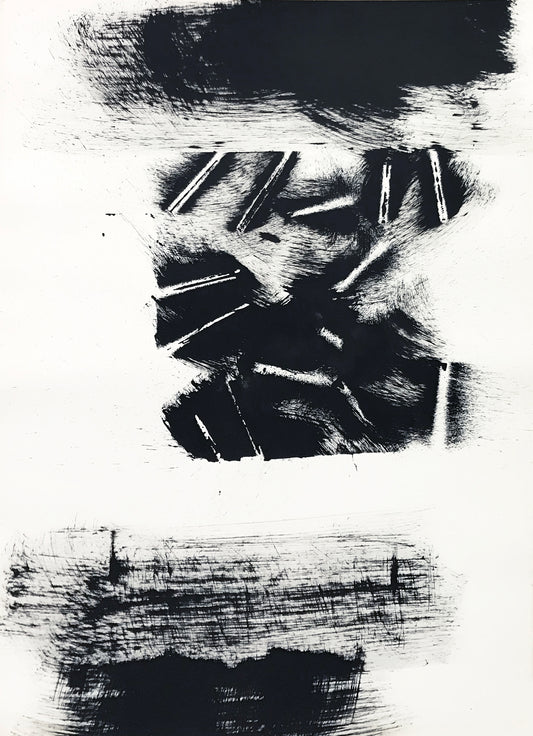 Sold out
Sold outMuso Window 048
Regular price ¥300,000Regular priceUnit price / per -
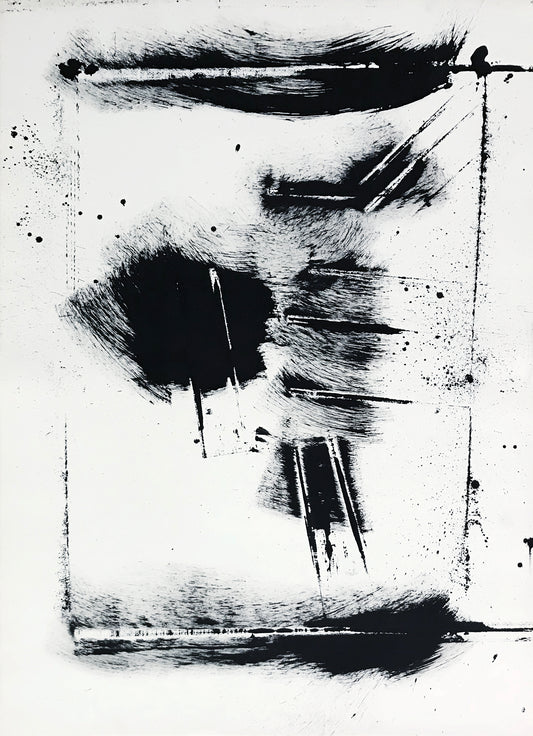 Sold out
Sold outMuso Window 049
Regular price ¥300,000Regular priceUnit price / per -
Muso Window 050
Regular price ¥300,000Regular priceUnit price / per -
Muso Window 051
Regular price ¥300,000Regular priceUnit price / per -
Muso Window 052
Regular price ¥300,000Regular priceUnit price / per -
Muso Window 053
Regular price ¥300,000Regular priceUnit price / per -
Muso Window 054
Regular price ¥300,000Regular priceUnit price / per -
Muso Window 055
Regular price ¥300,000Regular priceUnit price / per -
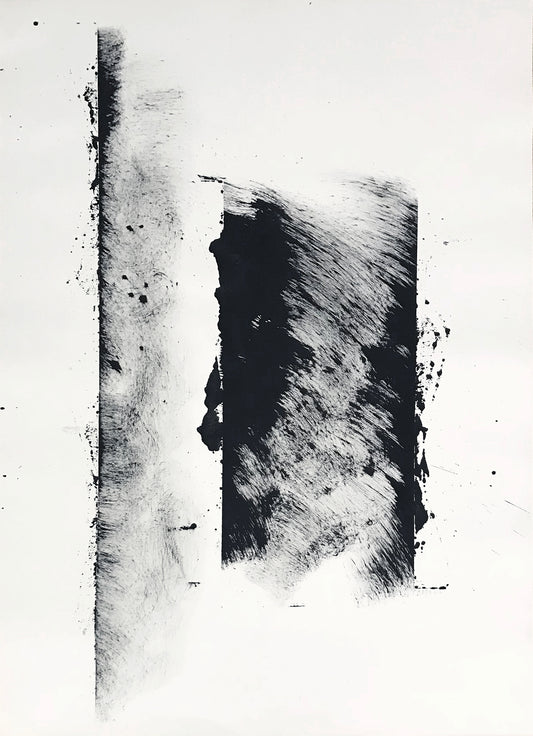 Sold out
Sold outMuso Window 056
Regular price ¥300,000Regular priceUnit price / per -
Muso Window 057
Regular price ¥300,000Regular priceUnit price / per -
Muso Window 058
Regular price ¥300,000Regular priceUnit price / per -
Muso Window 059
Regular price ¥300,000Regular priceUnit price / per -
Muso Window 060
Regular price ¥300,000Regular priceUnit price / per -
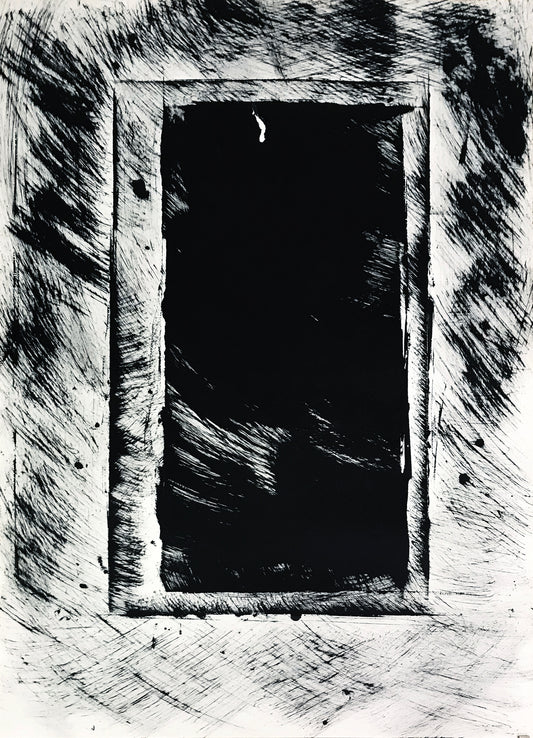 Sold out
Sold outMuso Window 061
Regular price ¥300,000Regular priceUnit price / per -
Muso Window 062
Regular price ¥300,000Regular priceUnit price / per -
 Sold out
Sold outMuso Window 063
Regular price ¥300,000Regular priceUnit price / per -
Muso Window 064
Regular price ¥300,000Regular priceUnit price / per -
Muso Window 065
Regular price ¥300,000Regular priceUnit price / per -
Muso Window 066
Regular price ¥300,000Regular priceUnit price / per -
Muso Window 067
Regular price ¥300,000Regular priceUnit price / per -
Muso Window 068
Regular price ¥300,000Regular priceUnit price / per -
Muso Window 069
Regular price ¥300,000Regular priceUnit price / per -
Muso Window 070
Regular price ¥300,000Regular priceUnit price / per -
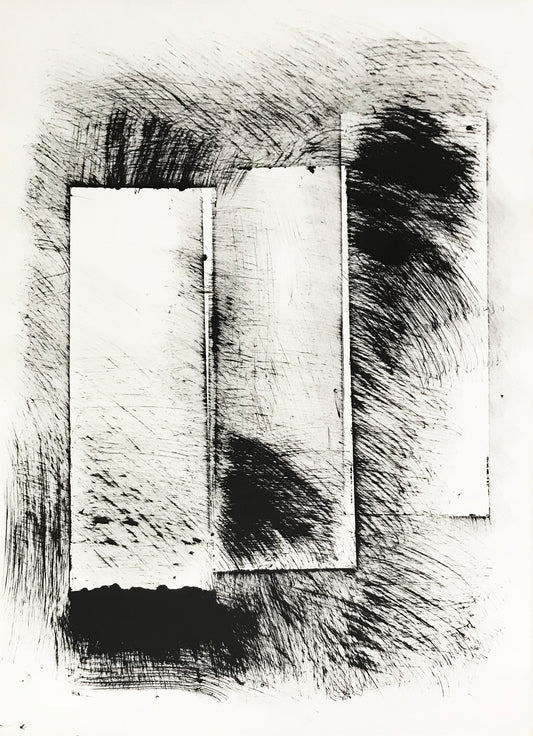 Sold out
Sold outMuso Window 071
Regular price ¥300,000Regular priceUnit price / per -
Muso Window 072
Regular price ¥300,000Regular priceUnit price / per -
Muso Window 073
Regular price ¥300,000Regular priceUnit price / per -
Muso Window 074
Regular price ¥300,000Regular priceUnit price / per -
Muso Window 075
Regular price ¥300,000Regular priceUnit price / per -
 Sold out
Sold outMuso Window 076
Regular price ¥300,000Regular priceUnit price / per -
Muso Window 077
Regular price ¥300,000Regular priceUnit price / per -
Muso Window 078
Regular price ¥300,000Regular priceUnit price / per -
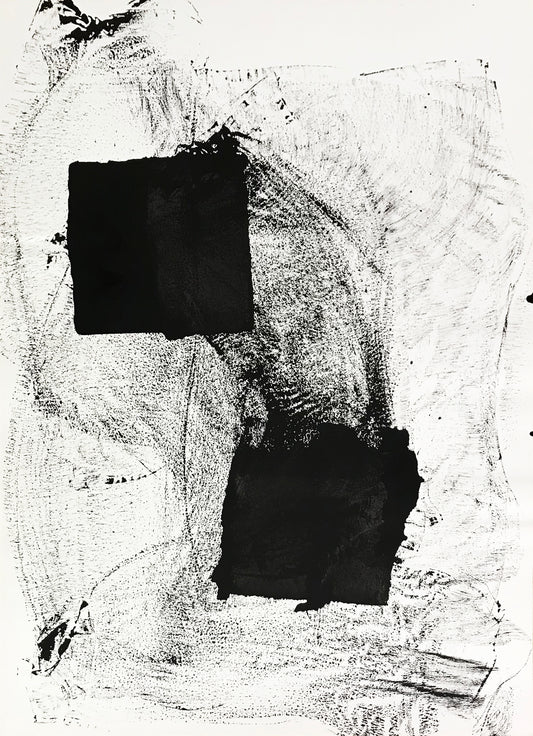 Sold out
Sold outMuso Window 079
Regular price ¥300,000Regular priceUnit price / per -
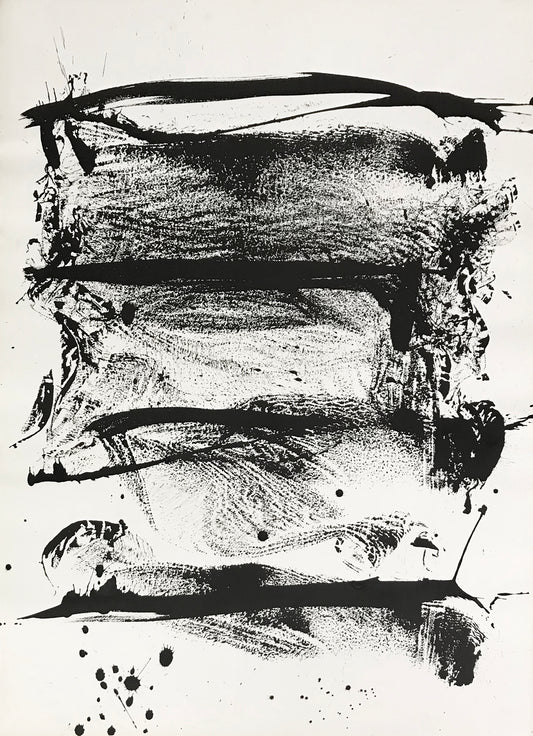 Sold out
Sold outMuso Window 080
Regular price ¥300,000Regular priceUnit price / per -
Muso Window 081
Regular price ¥300,000Regular priceUnit price / per -
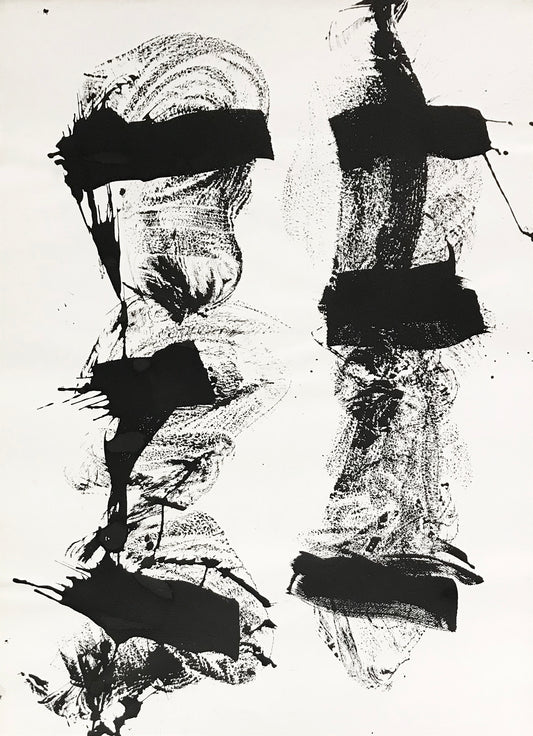 Sold out
Sold outMuso Window 082
Regular price ¥300,000Regular priceUnit price / per -
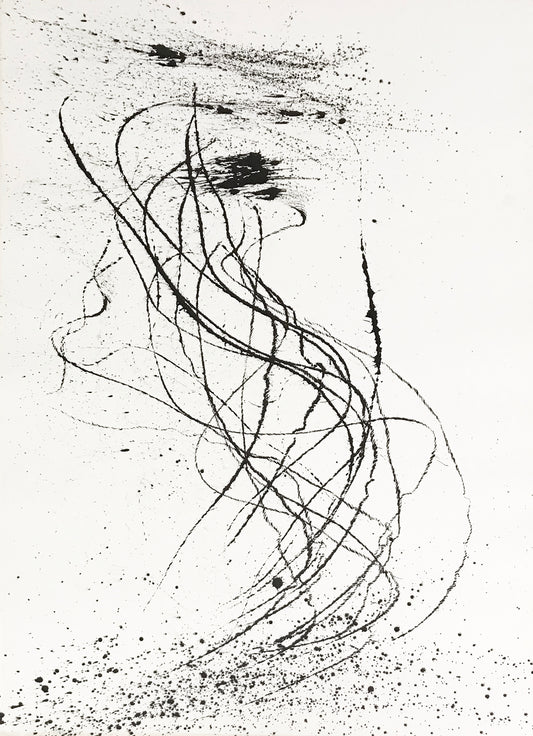 Sold out
Sold outMuso Window 083
Regular price ¥300,000Regular priceUnit price / per -
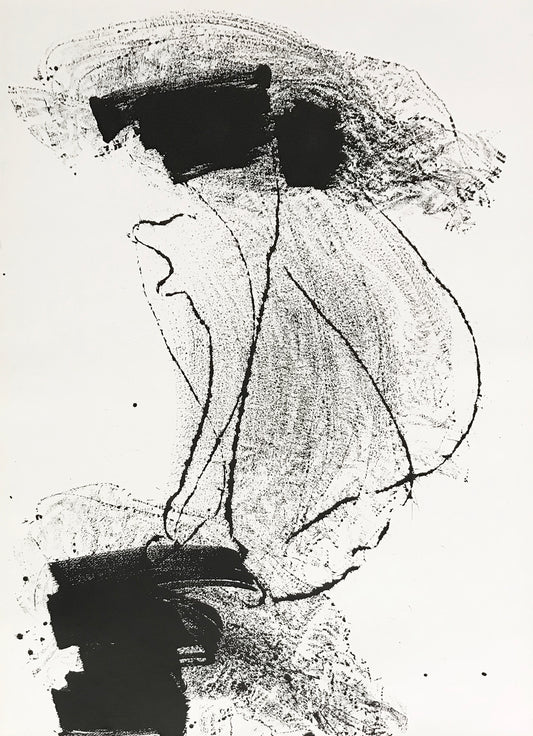 Sold out
Sold outMuso Window 084
Regular price ¥300,000Regular priceUnit price / per -
 Sold out
Sold outMuso Window 085
Regular price ¥300,000Regular priceUnit price / per -
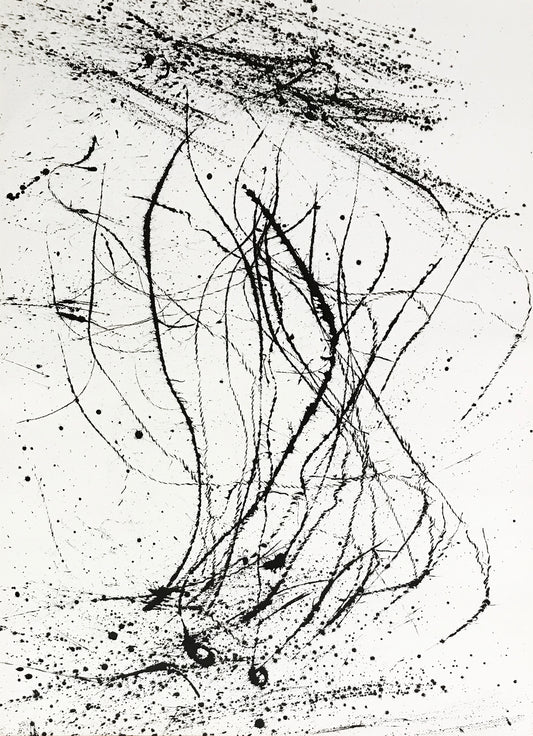 Sold out
Sold outMuso Window 086
Regular price ¥300,000Regular priceUnit price / per -
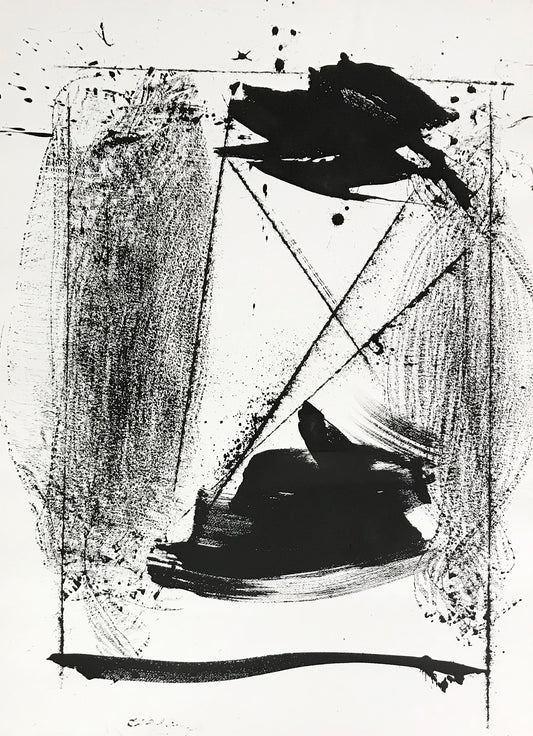 Sold out
Sold outMuso Window 087
Regular price ¥300,000Regular priceUnit price / per -
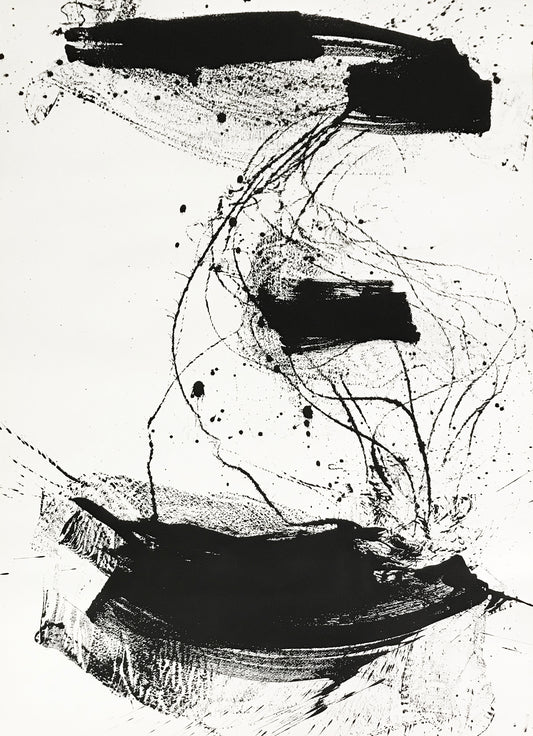 Sold out
Sold outMuso Window 088
Regular price ¥300,000Regular priceUnit price / per -
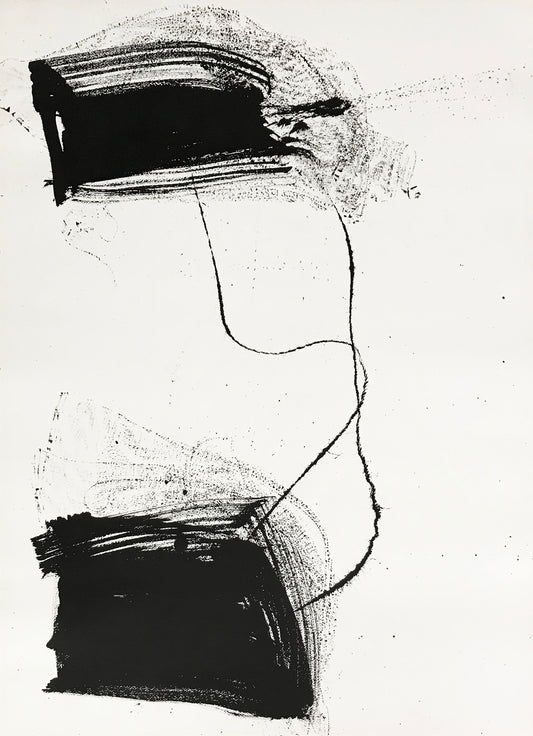 Sold out
Sold outMuso Window 089
Regular price ¥300,000Regular priceUnit price / per -
Muso Window 090
Regular price ¥300,000Regular priceUnit price / per -
Muso Window 091
Regular price ¥300,000Regular priceUnit price / per -
Muso Window 092
Regular price ¥300,000Regular priceUnit price / per -
Muso Window 093
Regular price ¥300,000Regular priceUnit price / per -
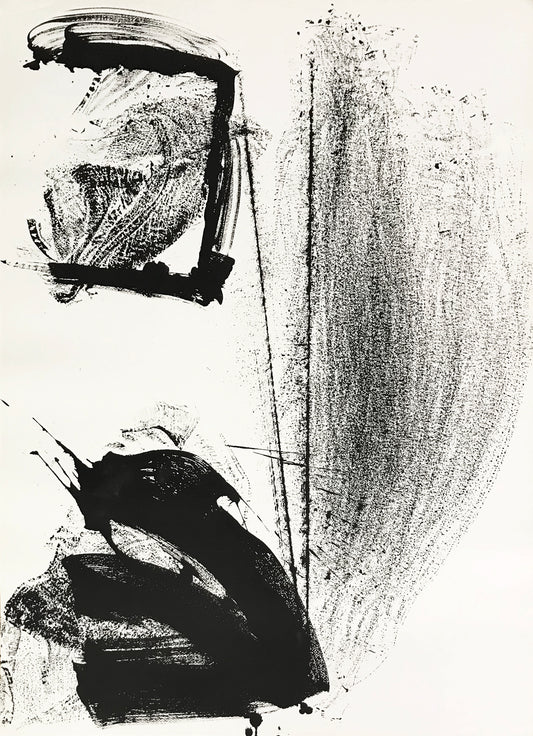 Sold out
Sold outMuso Window 094
Regular price ¥300,000Regular priceUnit price / per -
Muso Window 095
Regular price ¥300,000Regular priceUnit price / per -
Muso Window 096
Regular price ¥300,000Regular priceUnit price / per -
Muso Window 097
Regular price ¥300,000Regular priceUnit price / per -
Muso Window 098
Regular price ¥300,000Regular priceUnit price / per -
Muso Window 099
Regular price ¥300,000Regular priceUnit price / per -
Muso Window 100
Regular price ¥300,000Regular priceUnit price / per -
Muso Window 101
Regular price ¥300,000Regular priceUnit price / per -
Muso Window 102
Regular price ¥300,000Regular priceUnit price / per -
Muso Window 103
Regular price ¥300,000Regular priceUnit price / per -
Muso Window 104
Regular price ¥300,000Regular priceUnit price / per -
Muso Window 105
Regular price ¥300,000Regular priceUnit price / per -
Muso Window 106
Regular price ¥300,000Regular priceUnit price / per -
Muso Window 107
Regular price ¥300,000Regular priceUnit price / per -
Muso Window 108
Regular price ¥300,000Regular priceUnit price / per -
Muso Window 109
Regular price ¥300,000Regular priceUnit price / per -
Muso Window 110
Regular price ¥300,000Regular priceUnit price / per -
Muso Window 111
Regular price ¥300,000Regular priceUnit price / per -
Muso Window 112
Regular price ¥300,000Regular priceUnit price / per -
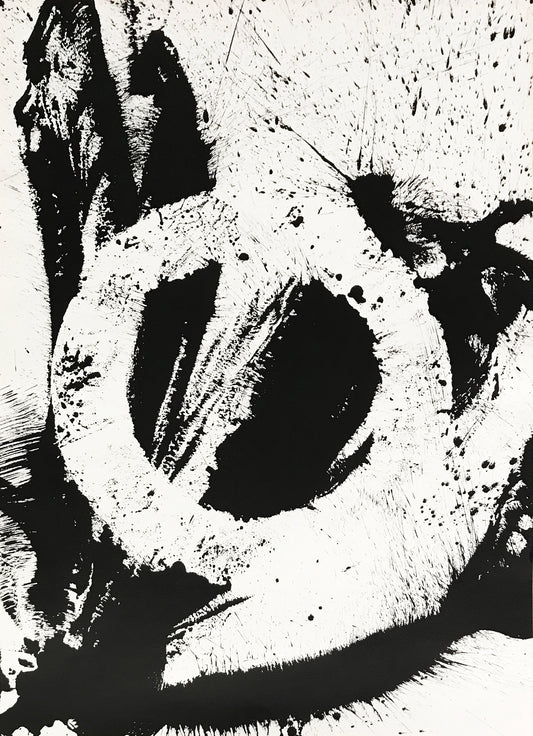 Sold out
Sold outMuso Window 113
Regular price ¥300,000Regular priceUnit price / per -
Muso Window 114
Regular price ¥300,000Regular priceUnit price / per -
Muso Window 115
Regular price ¥300,000Regular priceUnit price / per -
Muso Window 116
Regular price ¥300,000Regular priceUnit price / per




